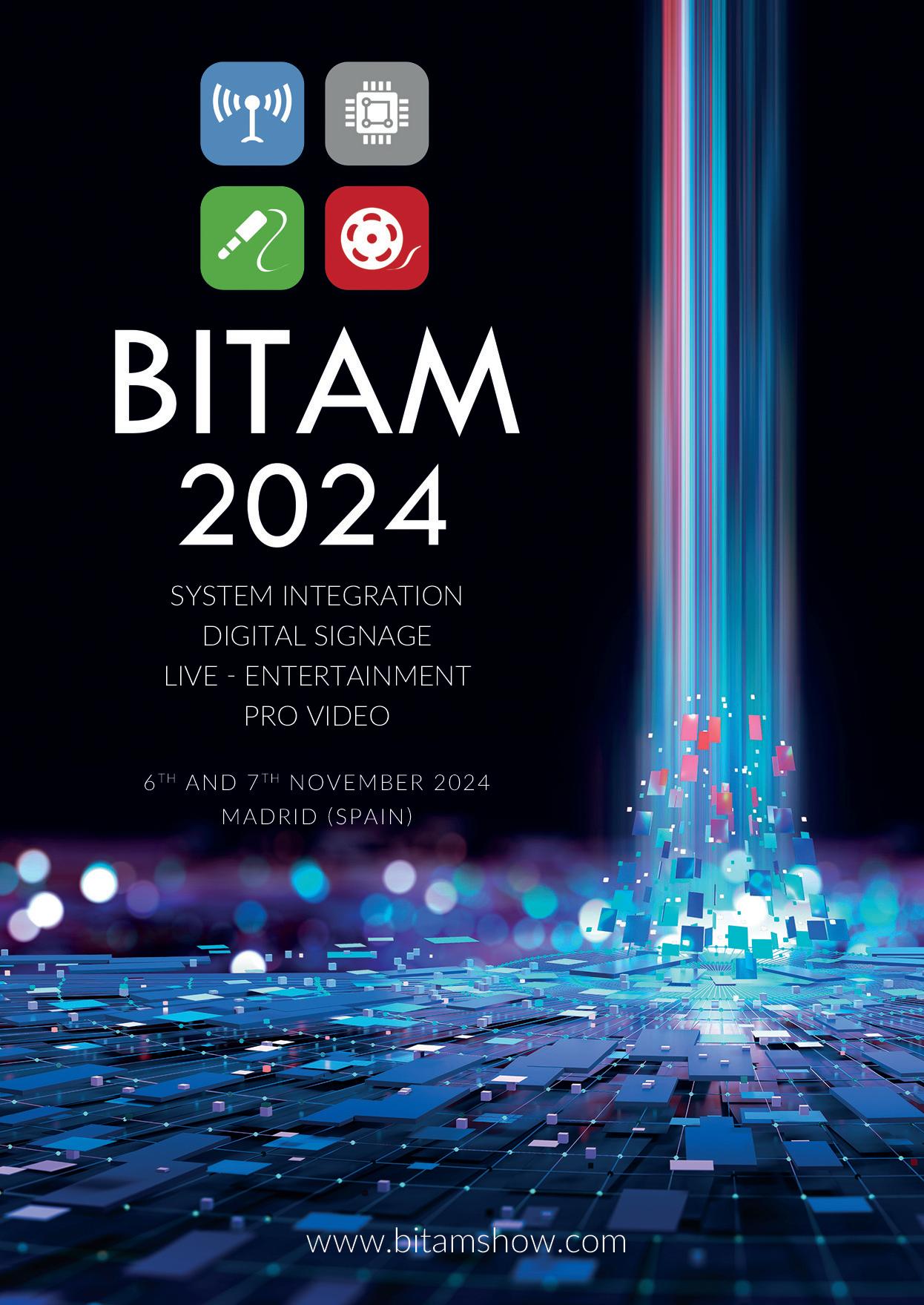




As we step into the heart of summer 2024, the global sporting landscape has been ablaze with excitement. From the thrilling matches of Euro 2024 and the Copa América to the prestigious courts of Wimbledon, these premium events have not only captivated audiences but also showcased the latest advancements in broadcast technology, production techniques, and even AI-powered tennis player analysis. These innovations are redefining how we experience sports, pushing the boundaries of what’s possible in live coverage and audience engagement.
In this August issue of TM Broadcast International, we delve into the cutting-edge developments shaping the broadcast and audiovisual production industry. Our cover story, “Broadcasting From Large Venues” by Lucas Gómez, Technical Director at Toboggan Broadcast Services, provides an in-depth look at the complexities and innovations involved in broadcasting from massive stadiums and arenas. As the demand for high-quality live event coverage grows, Gómez’s insights are crucial for understanding how to manage and optimize live event broadcasts, ensuring an immersive experience for viewers worldwide.
We’re also excited to take our readers behind the scenes at DAZN, where a transformative overhaul of their broadcast and production facilities has unlocked new capabilities and potential.
Editor in chief
Javier de Martín editor@tmbroadcast.com
Key account manager
Patricia Pérez ppt@tmbroadcast.com
Editorial staff press@tmbroadcast.com

This comprehensive report highlights DAZN’s commitment to delivering top-tier sports coverage and underscores the importance of state-of-the-art infrastructure in maintaining a competitive edge in the ever-evolving sports media landscape.
As we navigate the rapidly changing world of media consumption, our article on “The Future of Television” examines the trajectory of linear TV in an era dominated by streaming services and ondemand content. And, as technology continues to play a pivotal role in shaping our industry, Carlos Medina’s detailed analysis of PTZ (pan-tilt-zoom) cameras o ff ers valuable insights into these versatile tools that are becoming indispensable in modern broadcast setups. His evaluation covers the latest models, their features, and applications in various production environments.
Rounding out our feature lineup, we bring you an exclusive interview with John Wastcoat, SVP BD and Marketing at Zixi, a leader at the forefront of broadcast technology.
As we witness the convergence of traditional broadcasting with cutting-edge IT solutions, it’s clear that our industry is undergoing a seismic shift. May this issue of TM Broadcast International serve our readers as a compass to navigate successfully these exciting times in broadcast and audiovisual production.
Creative Direction
Mercedes González mercedes.gonzalez@tmbroadcast.com
Administration
Laura de Diego administration@tmbroadcast.com
Published in Spain
ISSN: 2659-5966
TM Broadcast International #132 August 2024
TM Broadcast International is a magazine published by Daró Media Group SL Centro Empresarial Tartessos Calle Pollensa 2, oficina 14 28290 Las Rozas (Madrid), Spain Phone +34 91 640 46 43
STORIES
DAZN has inaugurated in the heart of Madrid an innovative production hub that has been reshaping the standards of the sports audiovisual industry for six months, since February of this year. This development is due to the need to reconvert a purely office space into an audiovisual production center that allows them to both manage media flows and broadcast live from a virtual production studio.
By Lucas Gomez, Technical Director, Toboggan Broadcast Services
In this dynamic world of audiovisual production, technology is advancing at a rapid pace, opening up new opportunities and posing challenges for the way we capture, produce and broadcast live events from large venues. As Technical Director of the Toboggan Group, I have witnessed firsthand the technological revolution unfolding before our eyes and its implications for our industry. In this article, I will share my vision on some of the most significant advances, challenges, and future prospects for a rapidly changing field.


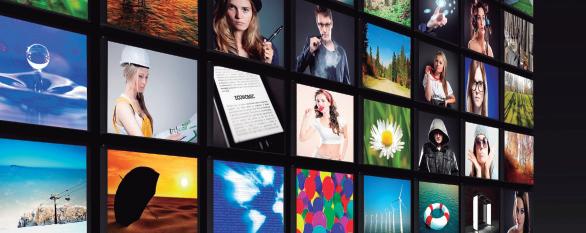

Perifery™, a division of DataCore, has unveiled AI+ 2.0, an AI-powered suite aimed at empowering media professionals to rejuvenate their content libraries. This follows the recent debut of the Perifery Intelligent Content Engine (ICE) at NAB 2024. The new AI+ 2.0 release is set to revolutionize the industry by enabling efficient monetization of existing media assets through enriched AI-generated metadata and automated distribution workflows.
AI+ 2.0 introduces a suite of enhanced tools including updated transcription, metadata generation, facial and object recognition, and automatic translation. These features optimize asset management, simplify technology administration, and automate content organization, thereby increasing visibility within content libraries. This empowers
media organizations—from creators to post-production houses—to boost productivity, creativity, and audience engagement, while leveraging AI to enhance the human experience.
Integrated seamlessly with S3-enabled cloud, edge, and on-premises storage solutions, AI+ 2.0 ensures intuitive content search and access from the moment of ingestion. It addresses industry challenges such as inefficient retrieval systems and complex infrastructure, offering multilingual support and global reach while eliminating operational silos and resource duplication. Compatible with industry-standard tools, storage, and MAM systems, AI+ 2.0 provides customizable workflow options, delivering an automated, cost-effective solution for media professionals.
Jason Perr, CTO of Media and Entertainment Solutions at Perifery, emphasized, “Perifery AI+ 2.0 merges advanced AI with workflow automation, unlocking transformative benefits for media and entertainment organizations. These innovations enhance content management capabilities, making operations more efficient and ensuring competitiveness in a rapidly evolving industry.”
Key features of Perifery AI+ 2.0 include automated content tagging using machine learning for enhanced searchability, streamlined workflow automation from ingest to distribution, and scalable integration with existing and future media libraries, catering to organizations of all sizes.
As the company states, customers interested in Perifery AI+ 2.0 will have the opportunity to explore Perifery’s Intelligent Content Engine (ICE) through a forthcoming program.

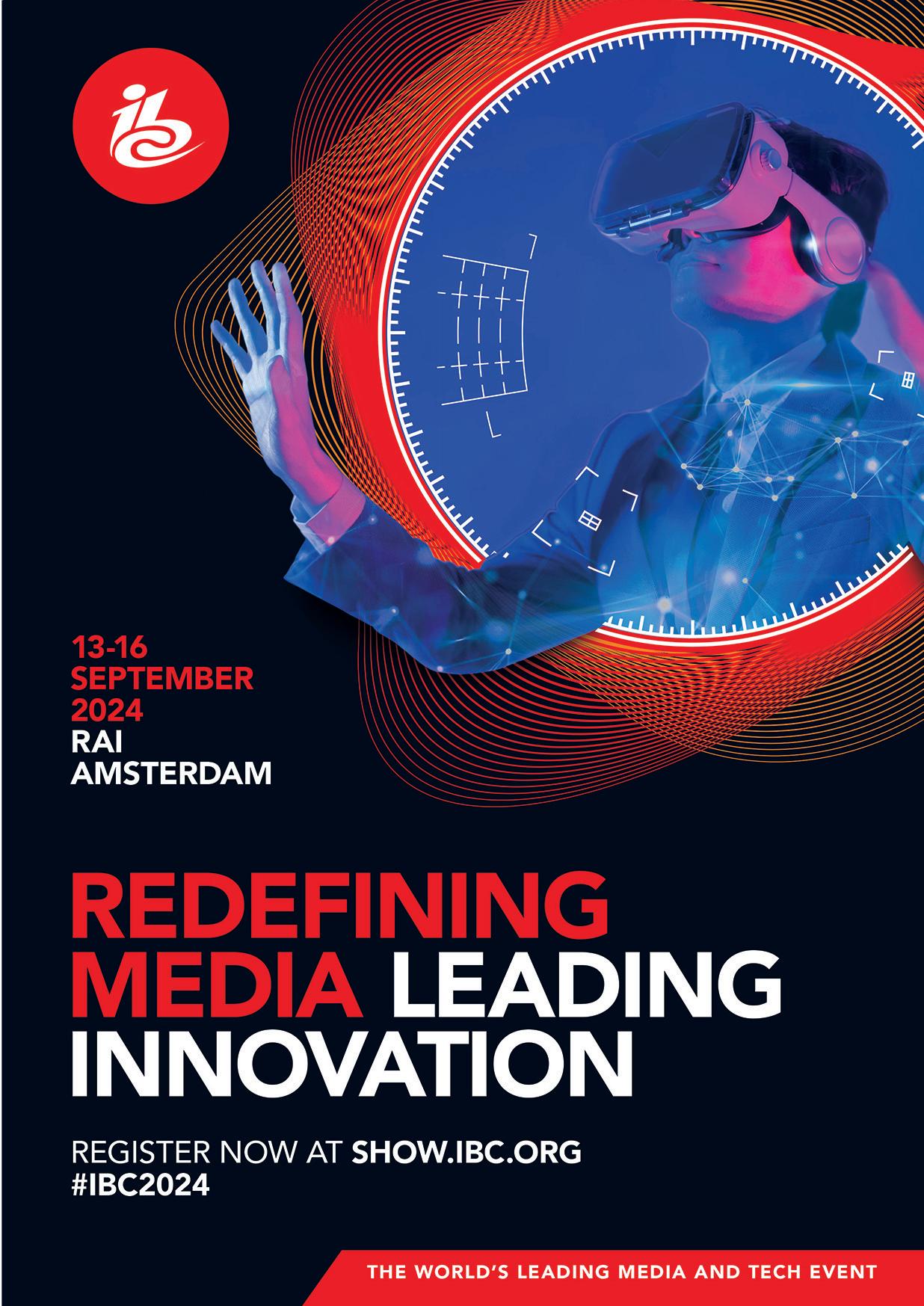

Telos Alliance expands capabilities with innovative virtual commentator panel
Telos Alliance, company specialized in broadcast audio operating for over 30 years, has announced the launch of the Virtual Commentator Panel (VCP), an addition to the Telos Infinity® VIP Virtual Intercom Platform.
The Infinity VCP extends the capabilities of the VIP product family by allowing remote contributors to access a commentary or announcer station from anywhere globally via the VIP intercom platform. This innovative panel includes several advanced features, such as the ability to mute the on-air microphone feed when using communications or speaking off-air. Users can also create a customized monitor mix with independent gain controls for
IFB, program, mix-minus, and auxiliary sources—all while retaining access to dedicated VIP intercom keys.
Martin Dyster, Vice President of Business Development and Infinity Product Director at Telos Alliance, stated, “The Virtual Commentator Panel represents a new type of VIP panel with a feature set that any voice artist, commentator, or TV and radio reporter will instantly recognize and appreciate. While Infinity VIP was initially designed for traditional communication needs, our clients saw the platform’s unique potential for remote onair contributions. The VCP brings this functionality to life with a blend of intercom and specialized features for contributors.”
The Virtual Commentator Panel, like other Infinity VIP panels, is accessible from any device with an HTML5 browser, including computers, tablets, and smartphones. It can also be used on iPhones and Android devices through the VIP App. For users who prefer a traditional hardware controller, the VCP integrates seamlessly with the Elgato Stream Deck + via a dedicated Stream Deck plug-in.
The VCP requires the recently released V3.0 Infinity VIP software and is available as an optional licensed feature. It comes in four, eight, and 12-button configurations and can be obtained through Telos Alliance’s global network of Telos Infinity channel partners.
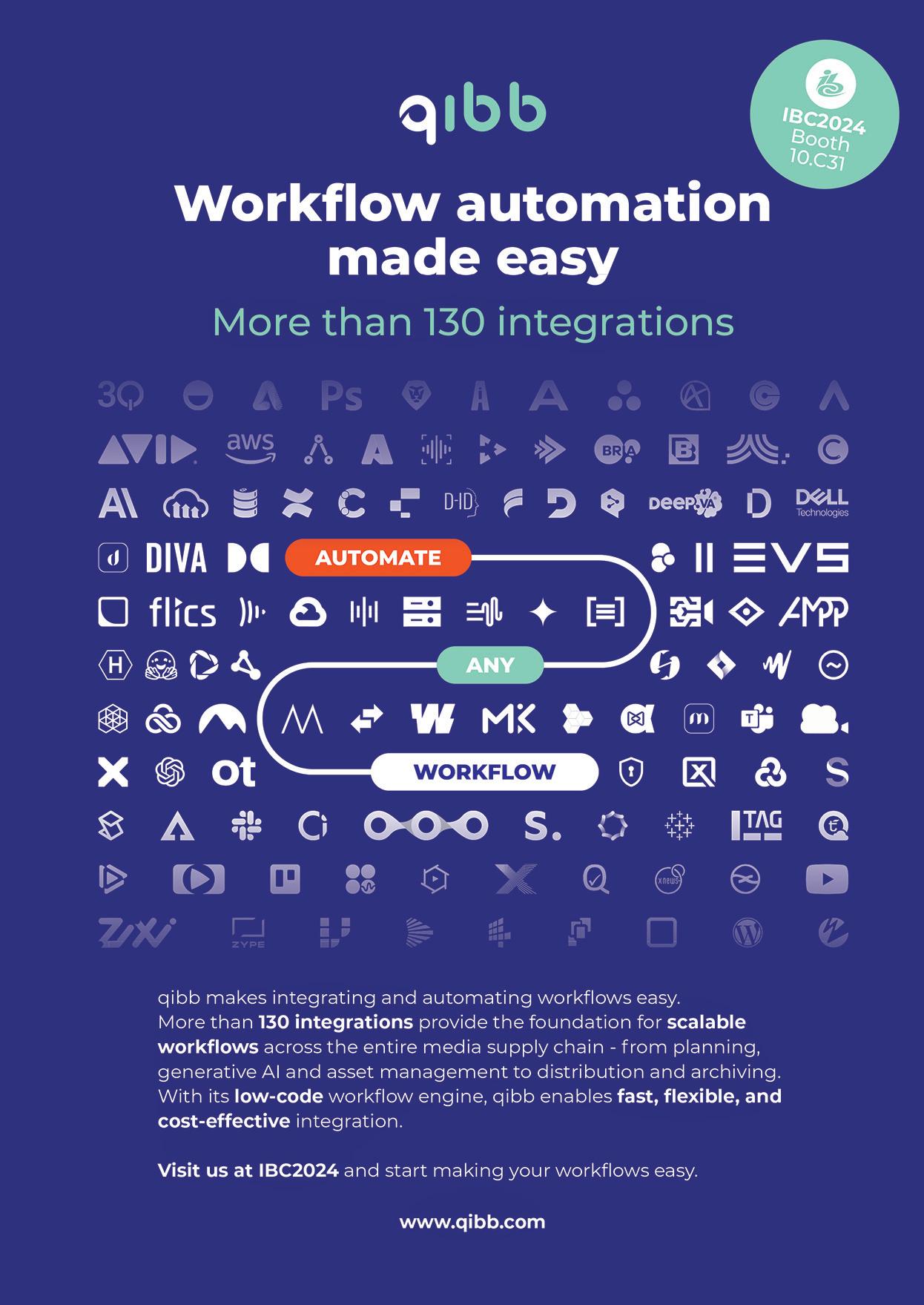
Vizrt has unveiled Pilot Sign-On for its Viz Pilot Edge HTML-based newsroom graphics platform. This new feature underscores Vizrt’s commitment to bolstering customer security in the media industry.
In today’s landscape, where cyber threats pose a significant risk to operational integrity, especially in newsrooms, robust security measures are paramount. With a cyber-attack occurring every 39 seconds globally, media organizations are increasingly vulnerable to breaches. Pilot Sign-On addresses these challenges by offering enhanced authentication tailored for newsroom environments.
Ionut ‘Johnny’ Pogacean, Senior Product Manager at Vizrt,
emphasizes the importance of protecting sensitive journalist workflows: “Journalists handle highly confidential information daily, necessitating reliable and secure systems. Pilot Sign-On provides a straightforward yet secure authentication process that safeguards newsroom activities. It not only protects sensitive data but also ensures streamlined access for journalists and designers.”
By implementing Pilot Sign-On, newsrooms can fortify their defenses against unauthorized access, reducing the risk of data breaches while maintaining operational efficiency. The system simplifies audit processes for internal IT teams, ensuring compliance with security protocols.
Furthermore, Vizrt has revamped Template Builder, used for creating Viz Pilot Edge templates, with modern web technology. This overhaul enhances security and speed, signi fi cantly improving startup times and UI responsiveness. These updates ensure consistency in template appearance and behavior within Pilot Edge, enhancing newsroom work fl ows for greater e ffi ciency and adaptability.
The introduction of Pilot Sign-On and the enhanced Template Builder exemplifies Vizrt’s dedication to advancing security and usability in modern newsroom environments, reinforcing its role as a trusted partner in the media industry.


X-Pert Multimedia Solutions, a provider of broadcast software and services, has been chosen by LinkNet, Indonesia’s leading provider of cable television, PayTV, and high-speed Internet services, to elevate its broadcast production capabilities. The collaboration has resulted in the deployment of 12 bundles of X-Pert Playout and Graphics, which now support 11 live channels along with one backup channel. Ensuring redundancy are the X-Pert Backup Supervisor and IP Switch. Additionally, LinkNet has adopted the offline playlist editor, X-Pert List.
The project was implemented in collaboration with PT Parama Nusa Persada, a respected system integrator in the region.
Ali Sudrajat, Head of Broadcast Operation at LinkNet, highlighted the significance of the X-Pert Playout and Graphics bundle in meeting their current production needs and preparing them for future broadcast requirements. “The powerful combination of cutting-edge technology, seamless integration, userfriendly interface, and reliable performance has surpassed our expectations,” Sudrajat remarked.
Ludmil Kushinov, CEO of X-Pert Multimedia Solutions, expressed enthusiasm about welcoming LinkNet to their roster of satisfied clients. “Their confidence in our products and services not only inspires us to
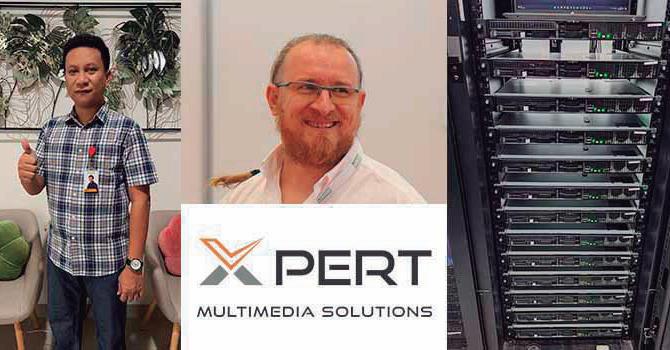
strive for excellence but also underscores our commitment to delivering unmatched value,” Kushinov stated. “Our products are designed for unparalleled scalability, making expansion of infrastructure and addition of new playout and backup solutions effortless and efficient.”
X-Pert Playout and Graphics comprises Playout and Graphics functionalities, designed to cater to broadcast organizations of all sizes. X-Pert Playout supports UHD/HD/SD, SDI, or IP formats, ensuring seamless operation 24/7, as the company signals. It incorporates advanced features such as SRT support for encoding and decoding, Intel QSV hardware-accelerated MPEG2/H264/HEVC decoding and encoding, SCTE35 triggers over IP UDP transport stream, SCTE104 triggers over SDI outputs (Decklink, AJA, Deltacast), and MPEG DASH dynamic adaptive streaming over HTTP output. Notably, it enables fully
automated operations for music and movie channels without human intervention.
X-Pert Playout has been succeeded by Atrio, introduced at BroadcastAsia 2023, representing an evolution with enhanced flexibility, simplicity, and reduced system resource usage. Atrio features a next-generation interface and a scheduled playlist business logic that enhances automation system integrations, facilitating daily broadcasting routines. It also includes Multi-Monitor for improved preview capabilities of live feeds before airing, offered through a subscription pricing model.
According to both companies’ statements, through this partnership, LinkNet enhances its broadcast capabilities significantly, leveraging stateof-the-art solutions from X-Pert Multimedia Solutions to deliver high-quality content seamlessly across its network.
Blackmagic Design has revealed that Asahi Broadcasting Corporation is utilizing Blackmagic URSA Broadcast G2 cameras, paired with Blackmagic Camera Fiber Converters and the ATEM Camera Control Panel, to power its streaming initiatives.
Located in Osaka, Asahi Broadcasting Television is a prominent affiliate of the TV Asahi network, renowned for producing a variety of popular programs, including the highly acclaimed M-1 Grand Prix comedy competition. The network also streams a diverse range of content, including sports events, leveraging Blackmagic Design’s advanced technology, such as during the recent Kansai Big Six Baseball League tournament.
Masaya Nagano, section chief of the Production Engineering Department at Asahi Broadcasting Corporation, explained the rationale behind their adoption of streaming equipment: “We sought cost-effective solutions with specifications that match traditional broadcast equipment, which can often be prohibitively expensive.”
Nagano elaborated on the requirements they had: “We needed cameras capable of transmitting tally, return signals, and video signals that integrate seamlessly with our switchers and streaming setups. The URSA Broadcast G2 cameras met all these criteria perfectly. For our sports broadcasts, which
often require long transmission distances, we also integrated Blackmagic Camera Fiber Converters and Blackmagic Studio Fiber Converters.”
For long-distance streaming needs, each of the three URSA Broadcast G2 cameras is equipped with a Blackmagic Camera Fiber Converter, enabling power supply and signal transmission through a single optical fiber cable. The ATEM Camera Control Panel complements their ATEM SDI Extreme ISO live production switcher, facilitating precise camera adjustments during live broadcasts.
“URSA Broadcast G2 cameras can also handle tally signals and remote camera control commands via coaxial cables, allowing us to broadcast in confined spaces without the need for additional Blackmagic Camera Fiber Converters. This feature closely replicates the operational workflow of traditional TV broadcasts, which is extremely convenient,” added Nagano.
The URSA Broadcast G2 cameras seamlessly integrate with Asahi Broadcasting Corporation’s existing Blackmagic Design
products, forming an integral part of their comprehensive streaming workflow. This includes portable rack-mounted systems centered around HyperDeck Studio HD Pro broadcast decks, Blackmagic Studio Fiber Converters, and the ATEM 2 M/E Constellation HD live production switchers.
“In the past, setting up our streaming systems for different projects was quite labor-intensive, requiring different cameras and configurations each time. Now, with everything consolidated into three racks, including the Blackmagic Studio Fiber Converter, we’ve streamlined our operations significantly. While we occasionally use other switchers for specific operational needs, the ATEM 2 M/E Constellation HD serves as our go-to solution for emergencies and for configuring preferred multiview setups,” remarked Nagano.
“On a recent project, such as the Kansai Big Six Baseball League tournament, we transitioned smoothly to this new system. Despite initial adjustments, we successfully streamed the event over 20 days without encountering any major issues,” concluded Nagano.
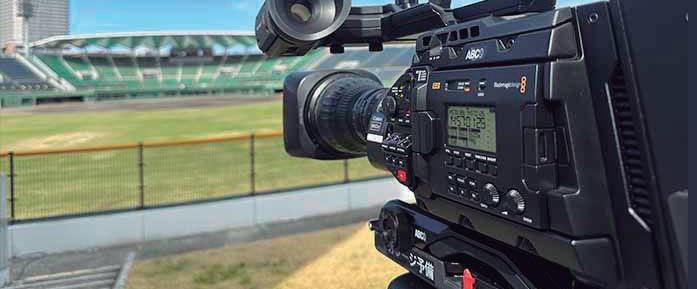
Enensys Technologies announces the deployment of its OneBeam DVB-SIS technology by towerCast, marking the introduction of France’s first UHD DTT multiplex.
As part of the modernization efforts leading up to the Paris 2024 Olympic and Paralympic Games, France is upgrading its DTT infrastructure to support UHD/4K broadcasting. This advancement delivers an unparalleled visual and auditory experience to viewers. DTT remains a free, universal service accessible via a simple antenna, offering exceptional reliability and a significantly lower environmental impact compared to internet-based broadcasting— using 10 to 14 times less energy.
towerCast, which operates a network of over 900 sites across France, including more than 600 owned facilities, will commence more than 80 UHD broadcasts starting July 23. The new UHD multiplex, utilizing the DVB-T2
standard and DVB-SIS (Single Illumination System) technology, represents a major leap forward. Enensys’ OneBeam solution incorporates this cutting-edge transport architecture, enabling the same satellite stream to serve both DTH (direct-to-home) reception and DTT transmitters. This integration enhances system efficiency and reduces operating costs by 50%.
towerCast first deployed this innovative architecture at its Lesparre site on January 23, 2024. The installation of two EdgeProbe units, also from Enensys, ensures round-theclock monitoring of the RF signal quality from UHD DTT transmitters. These probes offer continuous, precise assessments of signal quality and broadcast performance, enabling towerCast to provide high-quality UHD broadcasting and lay the groundwork for additional UHD DTT channels. By the conclusion of the Paris 2024 Games,
towerCast’s network will feature 52 operational OneBeam devices.
Baptiste Dumond, Director of TV Activities at towerCast, commented, “As we prepare for the Paris 2024 Olympic Games, the challenge of deploying a new DVB-SIS network within six months has been an exceptional experience. As a long-time user of Enensys solutions, we are thrilled to continue our collaboration with such an innovative partner.”
Didier Farcy, VP of Sales EMEA at Enensys, added, “We are thrilled to support towerCast in the modernization of DTT in France. Having deployed our OneBeam solution across EMEA for over a decade, we are proud to contribute to the launch of UHD DTT in France for the Olympics. This solution facilitates faster and more cost-effective deployment of second-generation DTT networks, significantly enhancing the viewer experience.”
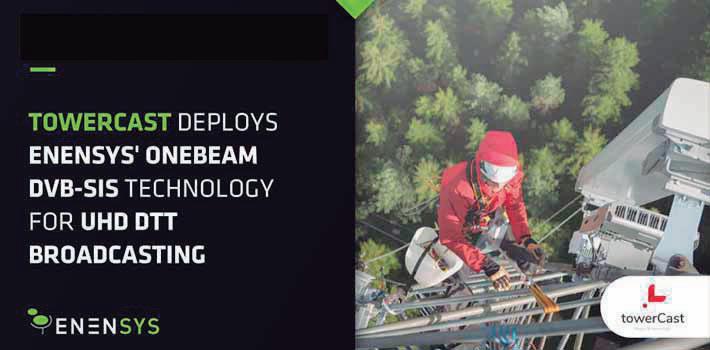
Riedel Communications has announced that TVMonaco, Monaco’s first general-interest public television channel, has opted for Riedel’s state-ofthe-art Artist intercom system, SmartPanels, and Bolero wireless intercom system to ensure seamless communication across its broadcast operations. Officially launched on September 1, 2023, by Prince Albert II of Monaco, and a new addition to the TV5Monde network, TVMonaco focuses on delivering content covering the environment, news, sports, and the art of living on the Grande Riviera. The decision to select Riedel’s intercom solutions aligns with TVMonaco’s current requirements as a new station and supports its broader business strategy, facilitating more agile and effective communications internally and externally, as the firm stated.
Sylvain Bottari, CTO at TVMonaco, remarked, “Riedel’s state-of-theart solutions not only met our immediate communication needs but also gave us confidence in our ability to launch a brand-new broadcast station on schedule and bring our programming to air successfully. The company’s commitment to excellence and its unparalleled support have been instrumental in ensuring a seamless launch for TVMonaco within a short time frame, and the intercom systems have performed flawlessly since day one.”
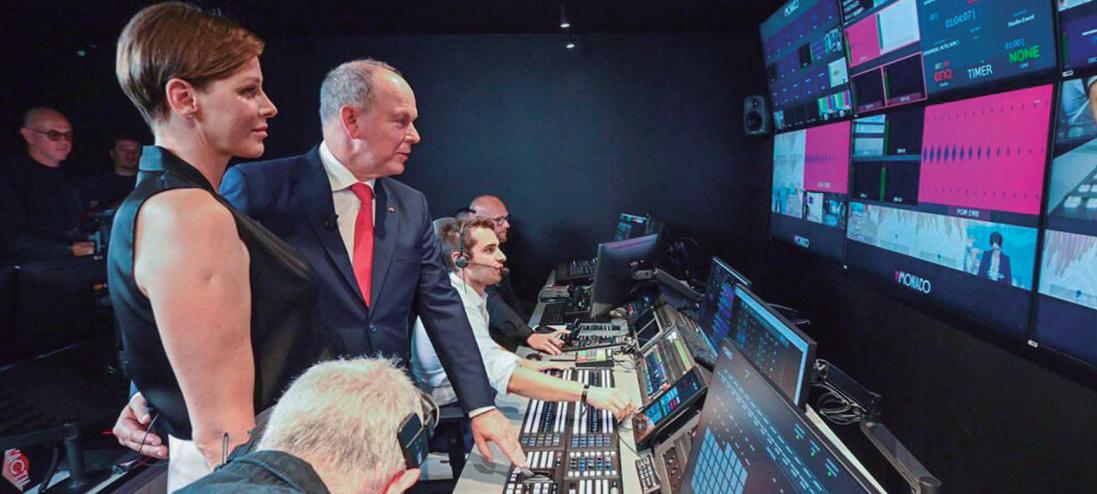
The Artist-1024, SmartPanel, and Bolero systems play a crucial role in TVMonaco’s operations, facilitating communication between the control room, MCR, seven editing rooms, and maintenance cockpit, the broadcaster explained. Widely recognized for their reliability and highly esteemed by TVMonaco’s technical team due to their extensive use in audiovisual production and OB vans, the Riedel intercom systems have proven valuable for TVMonaco’s sports magazine and TV news segments, which require intensive communication.
Furthermore, the Riedel solutions ensure connectivity with external partners, supporting various audio formats such as Dante, Madi, AES67, and SMPTE ST 2110, thereby providing TVMonaco with a future-proof solution.
An Artist-1024 intercom node, accompanied by a range of Riedel SmartPanels (including the RSP-1232 HL, RSP-2318, and DSP-2312), and Bolero beltpacks, was deployed and commissioned
to support the channel’s inaugural broadcast. The ergonomic design of the SmartPanels, the versatility of the Artist system for daily studio operations, and the outstanding performance of the Bolero wireless system were pivotal factors influencing TVMonaco’s decision to opt for Riedel over other providers. Riedel’s Director software offers a user-friendly interface that streamlines production workflows and enhances daily operations.
Philippe Delépine, Regional Sales Manager Southern Europe at Riedel, expressed his satisfaction, stating, “I am thrilled to see our partnership with TVMonaco come to fruition. Their selection of our wired and wireless intercom systems for this critical launch underscores the trust and confidence they have in our solutions. Moreover, this collaboration exemplifies Riedel’s ongoing commitment to delivering reliable, intuitive communication solutions that empower broadcasters to excel in a competitive media landscape.”
Dejero supported Czech production company Livecast s.r.o in delivering uninterrupted live coverage of the 2024 Prague Marathon for Czech Television. This event, featuring 8,000 participants, utilized Dejero’s EnGo mobile video transmitters, GateWay network aggregation device, and WayPoint receiver to ensure seamless connectivity throughout the marathon.
Livecast utilized Dejero’s technology to stream live camera feeds from multiple vantage points along the 26-mile route to Czech TV’s CT1 TV and the event organizer’s YouTube channel. These feeds originated from a helicopter covering a 20 km radius, a motorbike, and a car, providing viewers with comprehensive coverage of the marathon.
The Dejero EnGo mobile video transmitters, equipped with six SIM cards each, leveraged Smart Blending Technology™ to aggregate signals from three cellular network carriers simultaneously. This redundancy ensured robust connectivity as Livecast operators followed participants through Prague’s streets, navigating through network congestion caused by the event’s 15,000+ attendees at the start/finish line.
Livecast has been partnering with Czech Television since 2015, delivering production services for both Prague’s half marathon and full marathon events.
Honza Strohner, CEO of Livecast s.r.o, highlighted the efficiency and reliability of Dejero’s solutions: “Dejero solutions save us a lot of time and logistics –the units are quick to set up and easy to operate, and we had wonderful coverage across the entire Marathon routes without any breakups.”
Strohner contrasted Dejero’s technology with previous methods: “In the years prior, we were using RF transmitters, which are far more complicated. Motorbikes would transmit to the helicopter, where the signal was embedded together with cineflex, and then sent back to the OB compound. Being able to combine LTE networks using Dejero makes the transmission far easier and more cost effective.”
At the temporary OB compound, a Dejero WayPoint receiver reconstructed, decoded, and outputted video signals from EnGo transmitters to Czech Television’s platforms. Additionally, a Dejero GateWay, also equipped with six SIM
cards, provided reliable internet connectivity at the start/finish line.
Dejero’s Smart Blending Technology integrates connectivity from diverse cellular and IP network providers, creating a resilient ‘network of networks’ that enhances coverage area and reliability, as the broadcaster signaled.
Livecast utilizes Dejero Control cloud management system for real-time adjustments in challenging environments. Strohner noted, “With Dejero Control, our camera operators can focus on their work. All settings are managed remotely, ensuring stress-free productions.” Strohner concluded with praise for Dejero’s support: “Dejero has a very supportive team of engineers. They keep improving the product with every new firmware release and genuinely listen to their customers.”
The 2024 Prague Half Marathon took place on April 6, followed by the Prague Marathon on May 5, 2024.

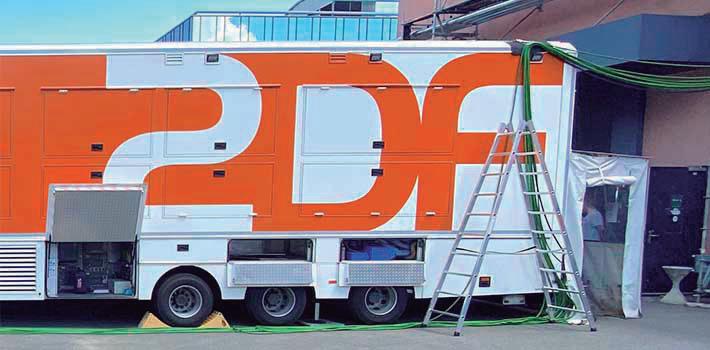
German public broadcaster ZDF is taking a step towards modernizing its media production capabilities by migrating its asset management systems to Avid’s MediaCentral | Cloud UX platform. This move is part of a multi-year agreement that aims to future-proof ZDF’s infrastructure, ensuring it has access to Avid’s latest innovative features for news and program production.
The transition to MediaCentral | Cloud UX equips ZDF with a comprehensive set of tools to manage their news and program workflows, covering the entire process from ingest to publication. This upgrade supports ZDF’s complex multisite setup, which includes a central media asset system at its headquarters in Mainz,
alongside additional systems in Berlin and Düsseldorf.
A key benefit of the MediaCentral | Cloud UX platform is its robust remote collaboration capabilities, enabling ZDF’s production teams to work efficiently within an on-premise model while benefiting from regular updates and new features from Avid.
“Our editorial teams have enthusiastically embraced the new possibilities with Avid MediaCentral | Cloud UX in their daily work,” said ZDF Project Manager Antje Lang. “This new agreement with our long-term trusted partner Avid future-proofs our production tech, allowing us to accelerate our news and program production workflows.”
Avid Chief Sales Officer Tom Evetts commented, “With a partnership stretching across more than 20 years, Avid is delighted to be at the heart of ZDF’s plan to transition its news and production operations to meet the challenges ahead, securely and reliably, through our cutting-edge MediaCentral | Cloud UX platform.”
According to the company. MediaCentral is recognized as the industry’s most comprehensive media workflow platform. It enhances collaboration from any location, speeding up content turnaround and streamlining the entire production workflow. This allows dispersed teams to create better content more quickly, deliver to more outlets and devices, and maximize the value of their media assets, as Avid signals.
DAZN, the premier global sports streaming platform, has announced a landmark five-year broadcast partnership with the eSkootr Championship, marking a significant step in the expansion of the world’s first micromobility racing series.
Under this extensive global agreement, DAZN will provide live and on-demand coverage of the eSkootr Championship across its platform. This partnership will make the Championship’s content available in DAZN’s free-to-view offering, ensuring accessibility to fans across all DAZN markets worldwide.
With a rising global interest in motorsports, DAZN is excited to introduce this groundbreaking racing series to both existing and new fans. Leveraging its great global reach and advanced technology, DAZN stands as the
sole dedicated sports platform equipped to broadcast this content globally. The eSkootr Championship’s live and on-demand coverage will be available at no cost to viewers in over 200 territories, making it more accessible than ever.
Following a successful inaugural European season in 2022, the eSkootr Championship is set to expand globally for the 2024/25 season, featuring six races across three continents. Committed to sustainable innovation and targeting a younger, urban demographic, the eSkootr Championship represents the future of sports entertainment.
Pete Oliver, DAZN’s CEO of Growth Markets, commented, “DAZN continuously strives to offer fans new and innovative ways to enjoy sports. Our partnership with the eSkootr
Championship reflects our commitment to creating a platform that not only caters to today’s sports fans but also attracts the next generation of viewers. This deal enhances our growing array of free content and aligns with our goal to engage the future sports fan through cutting-edge technology and exhilarating content. With high-speed races around the globe, this partnership promises to captivate our audience.”
Hrag Sarkissian, Co-founder and CEO of the eSkootr Championship™, added, “We are thrilled to join forces with DAZN to broaden the reach of our upcoming eSkootr Championship races. As innovators in motorsport, accessibility is crucial for us, and DAZN’s free offering ensures that our racing series will connect with a new global audience.”


Ateme has expanded its partnership with SES to boost the global distribution of sports content. Utilizing Ateme’s innovative TITAN encoders, multiplexers, and decoders, SES will enhance the delivery of Ultra-High and High-Definition content across its extensive satellite and ground network.
Additionally, Ateme’s integration includes premium frame rate conversion with full motion compensation and support for High Dynamic Range (HDR) in Ultra-High Definition (UHD), enriching the visual experience for viewers worldwide. The partnership also leverages the BISS-CA encryption standard,
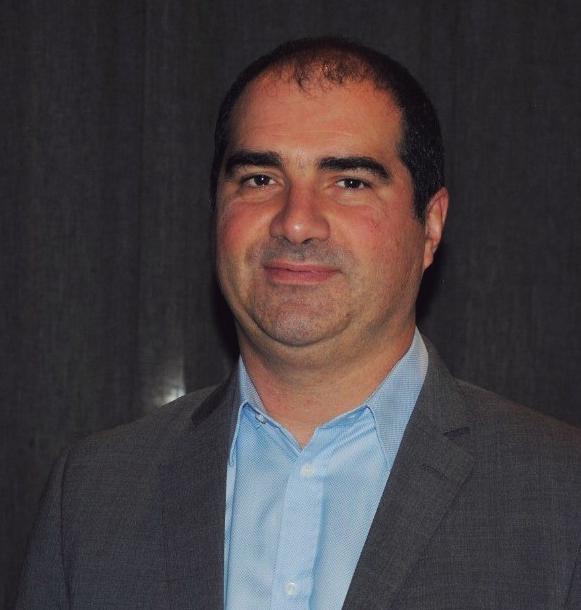
incorporating HDR with HDR LUT conversion, which facilitates the broader adoption of HDR technology. This ensures the delivery of top-quality video content characterized by crystal-clear images, smooth motion, and robust security.
“We are thrilled to expand our collaboration with Ateme to enhance our delivery workflow for major sporting events,” stated Michele Gosetti, Head of Media Sales France, Spain, Italy, and Sports & Events at SES. “This partnership underscores our commitment to providing broadcasters with advanced, secure, and reliable content distribution solutions,
ensuring that viewers around the globe have access to an unparalleled viewing experience.”
Julien Mandel, Senior Solution Marketing Director at Ateme, expressed his enthusiasm about strengthening the partnership, “We are excited to enhance our collaboration with SES to deliver premium sports content to audiences worldwide. Our continued innovation with the BISS-CA encryption standard reaffirms our dedication to advancing sports broadcasting technology, promising enhanced security and performance for future events.”
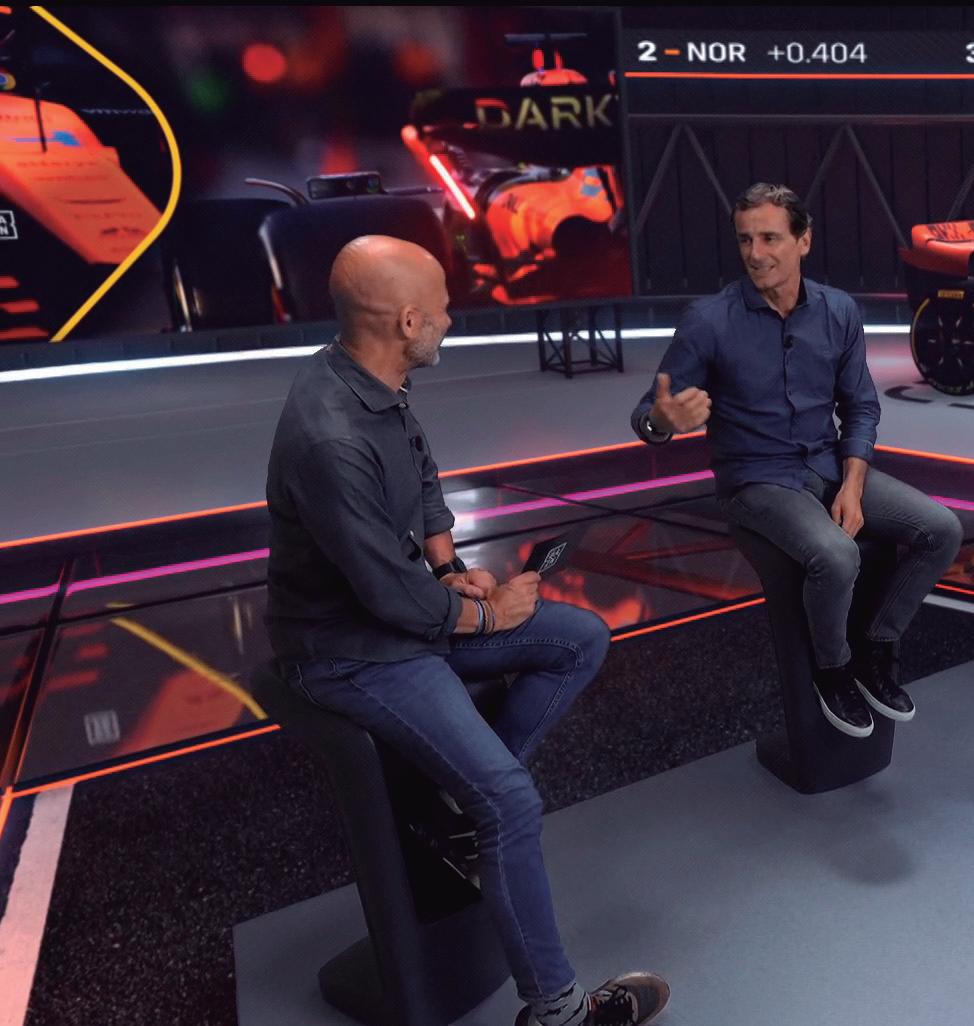
DAZN has inaugurated in the heart of Madrid an innovative production hub that has been reshaping the standards of the sports audiovisual industry for six months, since February of this year. This development is due to the need to reconvert a purely o ffi ce space into an audiovisual production center that allows them to both manage media

fl ows and broadcast live from a virtual production studio. This project for conversion and integration of audiovisual equipment, carried out by Telefónica Broadcast Services (TBS), not only marks a milestone in sports content production, but also exempli fi es the evolution of broadcast studios in this era of continuous innovation.
Last 30 of June, TM Broadcast had the opportunity to learn about the new facilities of the sports streaming giant, led by Raúl Izquierdo Alía, Director of TBS, Silvia Moreno, Head of Production of DAZN Spain and Ignacio Cañas, Head of Production Operations of DAZN Spain, to whom we thank for all the information provided during the visit, as well as to Roberto Jimeno Jiménez, Manager of Exploitation and Technical Media at TBS, for the documentary support provided.
DAZN's facilities are a testament to the efficiency and versatility of audiovisual production. The hub has two full-fledged studios, each one equipped with its own control gallery and independent sound room. This twin configuration allows great flexibility, with the ability to allocate resources to different productions according to the needs of the given moment.
A key element of this infrastructure is the MCR (Master Control Room), which manages the acquisition and contribution of signals, as well as the quality control of external connections. The technical core of the system is a hybrid audio/video matrix that distributes all resources between galleries, sets, booths and parlours, thus creating a fluid and highly efficient workflow.
DAZN's virtual set, inaugurated on February 28, 2024, coinciding with the Bahrain GP, is the jewel of the crown within the facilities. By making use of Vizrt technology, the studio o ff ers a 360º scenography that enables the creation of immersive and highly detailed virtual environments.
The system is based on Viz Engine, Vizrt's real-time rendering engine, with each studio camera having its own dedicated engine. This con fi guration allows for optimal performance and exceptional visual quality, to such an extent that representatives of Vizrt have commented that they have not seen a set with so many elements and a similar level of detail in all of them anywhere else in the world, as Roberto Jimeno, Operations and Technical Resources Manager at TBS, commented during TM Broadcast's visit.
The level of detail achieved in this virtual study can be impressive. The TBS creativity team, led by Alberto Gonzalo, has taken realism to new heights, implementing wear e ff ects on the fl oor of the virtual set and "graining" on elements such as the wheels of Formula 1 cars, with the intention of increasing the feeling of authenticity.
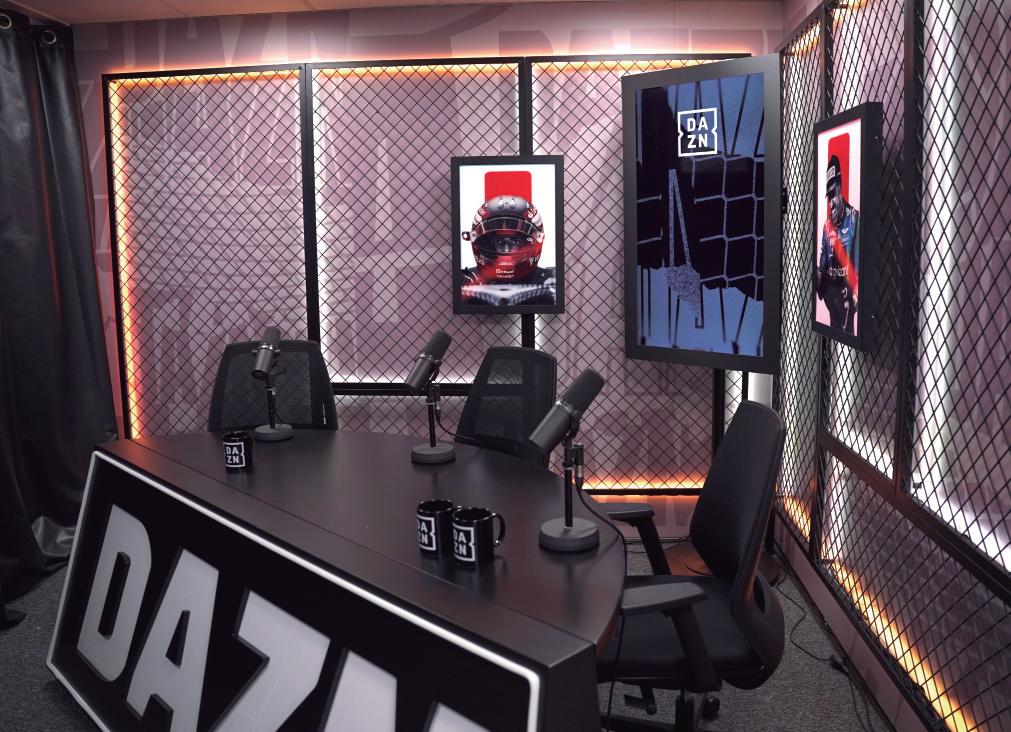
One of the most remarkable features of these facilities is the clever use of space, as the team conveyed to us from the beginning: "we have made the most in everything, as you will see," said Ignacio Cañas, Head of Production Operations of DAZN Spain, when he was showing the audio production room, located in the leftover space of a meeting room, near the cafeteria area. This is how DAZN has managed
to create a world-class production hub within a conventional office building, an achievement that underlines the innovation and adaptability of the project managed by TBS.
The old voice-over booths have been ingeniously converted into multifunctional spaces, as Silvia Moreno, Head of Production of DAZN Spain, pointed out with satisfaction. These areas serve now as post-production rooms,
online editing, graphics and even commentary booths for various sports competitions.
Adjacent to the virtual set we find a graphic control room and CCU (Camera Control Unit) that centralizes all studio operations. From here, technicians have full access to the set control, including augmented reality elements, virtual scenography (Viz ARC), PAN-TILT cameras, and lighting control.

The DAZN hub is not only a unique space for its internal capabilities, but also for its global connectivity. For the coverage of Formula 1, for example, point-to-point fiber optic connections have been established from each of the 24 circuits of the world championship up to the DAZN facilities in Spain.
But, according to what Ignacio Cañas told us, this connectivity infrastructure extends beyond F1. The hub is connected to the main production and distribution nodes of the company and its partners, including a permanent connection with DAZN's Central Control in London
and two-way connectivity with Movistar's Central Control in Tres Cantos, underlined the Head of Production Operations.
ffi
One of the constant trends in the audiovisual sector is the optimization of resources and operational efficiency. In order to boost both features, TBS has integrated remote management holistically into DAZN's audiovisual production, leveraging the most advanced technologies to create a flexible and efficient
workflow. This strategy not only improves operational efficiency, but also allows for greater flexibility in content production and distribution.
The TBS platform has been integrated with DAZN's existing audiovisual production hub in Madrid, which operates under a new generation remote production platform developed by NEP and offshored to the Netherlands. This platform allows remote access to a wide range of audiovisual production functionalities, including:
• Real-time access to resources
• Content editing
• Live commentary and narration
• Graphic design
All these resources are hosted in a virtual environment, which makes them accessible from anywhere in the world through an internet connection, thus streamlining media flows.
What was a string of voiceover booths has been converted into a corridor of production rooms that can be adapted to different needs and converted into:
• Post-production rooms
• Online editing stations
• Spaces for graphic design
• Commentator positions for different sports competitions
Remote production is part of the DNA of sports broadcasts, and to enhance it, DAZN and TBS have implemented systems that allow remote control of part of the technical staff and equipment on Formula 1 circuits from the General Perón (Madrid) facilities. For example, the sound consolo in the circuits can be controlled from the production center.

The DAZN team, with Ignacio Cañas (Head of Production Operations) and Silvia Moreno (Head of Production) told TM Broadcast what have been the main benefits derived from the boost of remote production capabilities:
• Cost reduction: By centralizing production and allowing remote access, DAZN has managed to optimize resources and reduce operating expenses such as transfers, trips...
• Increased flexibility: The ability to access and control resources from any location allows DAZN to quickly adapt to changes in scheduling or production needs.
• Efficient expansion: The implementation of remote production offices is much faster than the installation of traditional physical infrastructures, thus facilitating DAZN's expansion into new markets.
• Enhanced collaboration: The virtual platform
allows teams in different locations to work together more efficiently on common projects.
One of the secrets of DAZN's custom graphics system in 360º environments is the advanced management provided by Vizrt technology, which enables the creation a complete and highly detailed virtual scenography. This system plays an essential role in the customization of content, which is key for this sports content platform, and "especially for Formula 1 coverage", the team told us.
DAZN's audiovisual production space uses the Vizrt system, specifically the Viz Engine, for real-time rendering of 3D graphics. Each camera in the studio has its own dedicated engine, thus allowing for optimal performance and high visual quality.

DAZN's virtual set, with such small dimensions that no one would tell by looking at the result, offers a complete 360-degree scenography thanks to a green chroma that covers three quarters of the space, thus allowing the creation of immersive environments for different types of content, such as Formula 1 analysis, track representations, single-seaters and pits.

flexibility
In addition, the system allows quick customization of virtual studio elements, such as changing colors and logos to represent different teams, or converting a Ferrari vehicle into a ranking graph in just one move and in a smooth way. This flexibility facilitates adapting the environment to different production needs.
This is what in some environments is called ‘game-changing’ functionality: in DAZN's new audiovisual hub, it is possible to integrate live video feeds within elements of the virtual studio, allowing, for example, to show reporters in remote locations within the 360-degree environment.
And a streaming platform is not only about technology: a dynamic and professional creativity team is also in place, which has taken advantage of Vizrt's capabilities to add an unprecedented level of detail, such as wear and graining effects on the wheels of F1 cars, as we mentioned, implementing
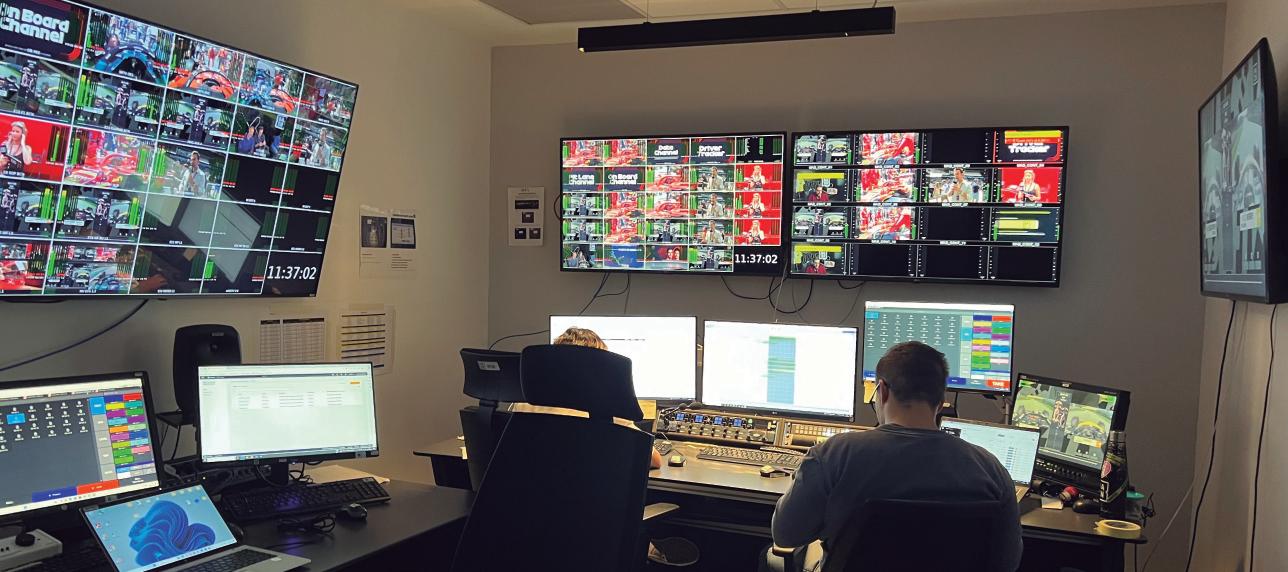
wear defects in floors and polishing in detail the reflections and lighting effects that viewers would not find in broadcasts from an actual physical set.
Key tools and technologies
1. Viz Engine: This real-time rendering engine is critical for creating animated 3D graphics at all resolutions.
2. Viz Artist: This Vizrt system is used for creation and control of 3D graphics in real time, allowing rapid customization and adaptation of the graphic elements according to the needs in each production.
3. Viz Trio: For the play of 2D signage in an agile
way, integrated with all other graphic elements and automated data update.
4. Viz ARC: This tool is used for the management of virtual scenography, thus allowing rapid changes in the virtual studio environment to adapt to different sports or competitions.
5. RCS Foundation: DAZN collaborates with Reality Check Solutions (RCS) to use this cloud-based data management service. RCS Foundation enables fast and complete delivery of sports data, which is then integrated into real-time graphics.
6. Custom control apps: RCS has developed bespoke control applications that allow the DAZN team to
enable automated data-driven match chart carousels without relying on specialist chart operators.
7. Singular.live: This platform has been used to create DAZN Match Central, an automated scoring and statistics channel that uses data from multiple providers and social media platforms.
In addition, the management of these graphics for different formats is done through the Adaptive Graphics function of Viz Engine 5. This feature automatically adapts graphics to different aspect ratios and resolutions, ensuring a consistent look across multiple platforms, from traditional TVs to mobile devices and studio video screens.
Augmented reality is vital for sports broadcasts, and its use has almost become a hallmark for this sports platform. When we asked the team about the benefits gained from this long-standing partnership between sports and Augmented Reality, these are the points they made:
1. Flexibility and versatility: AR enables quick creation and modification of virtual environments, adapting them to different sports or competitions without the need for physical changes in the studio.
2. Improved visual narrative: AR elements allow to present data, statistics and analysis in a more dynamic and interactive way, improving the viewer's understanding.
3. Streamlining of resources: By using a virtual environment with augmented reality
elements, DAZN can reduce the costs associated with building and maintaining physical sets.
4. Immersive experience:
The combination of virtual scenography and AR creates a more immersive experience for viewers, thus increasing the engagement with the content.
But how has DAZN integrated AR into its sports broadcasts?
First of all, AR is a great help for tactical analysis; that is, they use this technology to superimpose graphics and animations on images of the game, which allows a more detailed and visual tactical analysis.
In addition, AR is critical to creating real-time statistics, as data and statistics are dynamically integrated into the broadcast, and augmented reality elements are used to present them in an
engaging and easy-tounderstand way.
On the other hand, virtual reconstructions facilitate commentators' explanations of technical aspects during sports broadcasts, and real-time video integration allows reporters to be included in remote locations within the 360° environment, as already pointed out. Finally, content customization -essential for agile and quality broadcasting- is quickly generated thanks to AR by creating graphic elements for different markets or audiences and adapting the content to local preferences.
As for implementation of all these technologies, this is done through a graphic control room and CCU (Camera Control Unit) that centralizes all studio operations. From here, as mentioned before, technicians have full access to the set control, including augmented reality elements, virtual scenography (Viz ARC), PAN-TILT cameras, and lighting control.
The basis of a quality production
DAZN's broadcast and audiovisual production space is equipped with high-definition 4K cameras, designed for studio production and live events. The use of 4K cameras allows for superior image quality, as viewers can see every day, with a resolution of 3840 x 2160 pixels.
1. Robotic cameras: The studio has three robotic cameras, which can be controlled remotely from the control room.
2. Centralized control: Adjacent to the virtual set a graphic control room and CCU (Camera Control Unit) centralizes all studio operations, including control of PAN-TILT cameras by means of a joystick.
3. Remote control: The system allows remote control of the cameras, making it easy to produce from distant locations.
Another must in the era of transformation that the broadcast and audiovisual production world has to do with the constant evolution of technology and techniques used in the sector, so scalability is essential in an audiovisual production hub that feeds one of the most viewed sports content platforms on the planet.
Currently, DAZN facilities allow 4K and HDR productions, although these capabilities are not fully utilized due to limitations in consumer devices. However, there are plans to expand these capabilities as these output devices evolve and support the new technologies.
In addition, other possibilities for evolution that both platform and integrator indicated they are considering were:
• Expansion of the connectivity infrastructure:
with the collaboration of Tata Communications, DAZN has already established a robust fiber optic infrastructure for global connectivity. There is a possibility to expand this infrastructure in order to support more events and improve redundancy and stability of connections.
• Increased storage and processing capacity: as content production grows, so do data storage and processing needs. DAZN can scale its network attached storage (NAS) and cloud storage systems to handle higher volumes of video data, ensuring fast and efficient access to content.
• Improvement of control and automation systems: Implementing more advanced control systems and automation can improve operational efficiency. This includes upgrading camera control systems and integrating artificial intelligence for workflow management, capabilities that are expected to evolve in the near future.

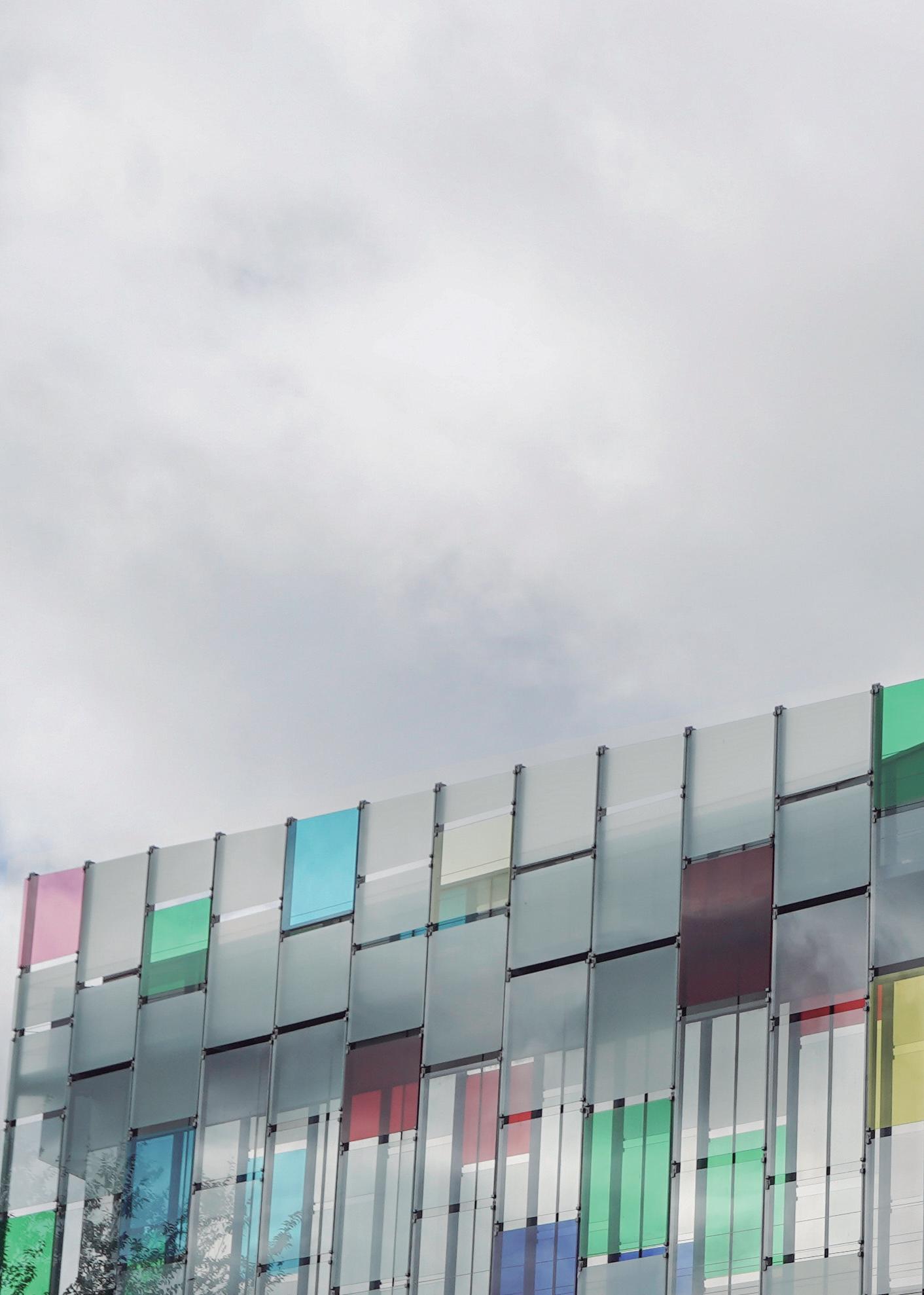
In this dynamic world of audiovisual production, technology is advancing at a rapid pace, opening up new opportunities and posing challenges for the way we capture, produce and broadcast live events from large venues. As Technical Director of the Toboggan Group, I have witnessed firsthand the technological revolution unfolding before our eyes and its implications for our industry. In this article, I will share my vision on some of the most significant advances, challenges, and future prospects for a rapidly changing field.


By Lucas Gomez, Technical Director, Toboggan Broadcast Services
The past decade has seen a renaissance of audiovisual production technology for large-scale events. While Toboggan's history in event production has only recently begun -the company entered the market in May last year- we see a number of significant changes that have set new levels of quality and creative possibilities for audiovisual production of live events. One of the biggest advances has been the widespread adoption of 4K and Ultra HD technologies. Both have vastly improved
the quality of the live stream, resulting in sharper, more detailed images, more vivid colors, and an extra dimension in perception. Together, this creates an immersive visual experience that takes viewers directly into the heart of the event, no matter where they are physically. At the same time, the progress made in ancillary technology fields, such as drones and high-resolution cameras, has expanded our creative arsenal. Every project entails a challenge; every challenge overcome is a source of fun and satisfaction.
Broadly speaking, IP technology represents the ultimate destination of our future in audiovisual production. Although to be clear, it still has a long way to go and presents quite a few challenges when it comes to putting it into operation. However, it's still a question of when, but not whether it's going to revolutionize our industry.
First of all, IP-based production holds promise not only because of its unprecedented flexibility,
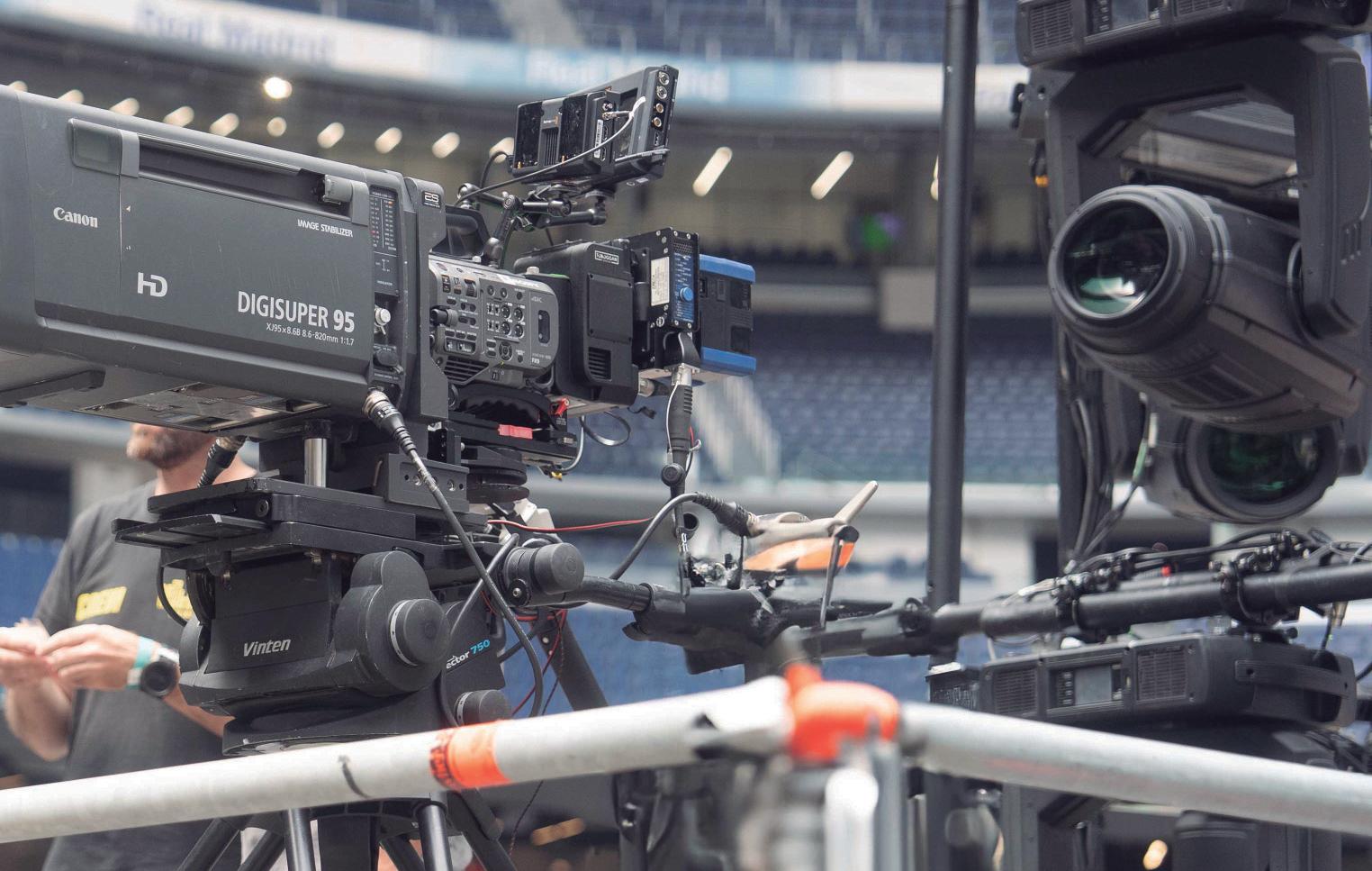
but also because it is cheaper in the long run. In the short term, it may be more expensive to maintain, but in a couple of years, our operational efficiencies will decrease the cost of IP-based data center infrastructure. However, due to the range of productions in which we engage, none of our operations have moved to production based on IP so far. Our customers are directly the producers, who request our services to offer them solutions and/or technical support in a specific artistic project. These types of projects are ephemeral events that
usually last no more than a week, without taking into account pre-production, of course.
That said, it is worth mentioning that the fi xed on-site facilities have changed a lot. In a very short time, we have gone from enclosures without any type of infrastructure or one based solely on copper (in all its expressions: video, audio, data) to facilities with mixed infrastructures, copper and fi ber, which support up to 100 Gbps. As you can see, the future of IP-based production is within reach.
Finally, when it comes to IP-based production, the current landscape offers global connectivity opportunities that were previously unthinkable for non-government users.
Thanks to specialized suppliers, it is now possible to interconnect different production locations and, in general, locations in the same city, country or even abroad through massive “dark” networks that can hold a huge amount of bandwidth. Obviously, like everything in this world, all these possibilities are irretrievably linked to the available budget.
In my opinion, virtual reality has not yet been developed in the right direction for use in live events and shows, but there is little doubt that its potential to create immersive experiences remains enormous, and only ongoing technical and logistical implementation issues are preventing its widespread use.
On the other hand, augmented reality has indeed proven itself a fast-evolving, quite useful technology. Overall, our experiences with this technology have been extremely positive and involved signi fi cantly reduced setup time. With advanced tracking systems, both external and built-in in cameras and lenses, AR can be easily deployed relatively quickly in all types of live environments.
But there is yet another benefit: augmented reality is more “democratic” than virtual reality, since viewers enjoy it from their homes
as much or even more than those who attend the event in person.
As for sound, both Dolby Atmos and DTS have taken sound quality to a whole new place, creating more realistic and immersive experiences.
In short, as I mentioned at the beginning, these two advances have raised the bar for audiovisual production, providing audiences with more exciting and immersive experiences.
In today's audiovisual content market, streaming platforms play a very important role: without them, content would not reach so many end users; and this is, after all, the ultimate goal of production. In addition, these streaming services offer user interaction features that make productions more attractive.
At Toboggan we take a pragmatic approach to signal delivery to these
platforms, which is a simple process and only requires encoders and a good internet connection. The connection must be secured (redundancy) and, if possible, dedicated; even so, it is possible to use public or domestic connections. As a general rule, whenever we broadcast on these platforms we use SRT encoding as standard, although we can also use RTMP on occasion. We usually have a third party for this service: we entrust the encoding and sending of the signal already produced to specialists in order to ensure the best quality and reliability.
Despite today's state-of-theart technology, production and broadcasting of any live event in large venues continues to offer challenges. The main limitations we may face have to do with bandwidth and connection, latency, synchronization...
For Toboggan, the best and most effective solution is to always broadcast with network and encoding redundancy. In addition to using redundant lines with sufficient bandwidth, we also use professional equipment from certified manufacturers.
However, it is necessary to take into account that the usual controls of any type of audiovisual production must be supplemented by those concerning the encoding of the signal in segments. For their part, the platforms automatically adjust the quality of the video signal based on the viewer's connection speed.
Another important factor -latency- is considered a tough challenge, especially in live broadcasts. Streaming platforms use Content Distribution Networks (CDNs) and low-latency signal transport protocols to deliver the signal to viewers. These replicate content across multiple globally distributed servers and reduce video streaming segments. The quality of service and signal delivery has increased significantly with these developments.
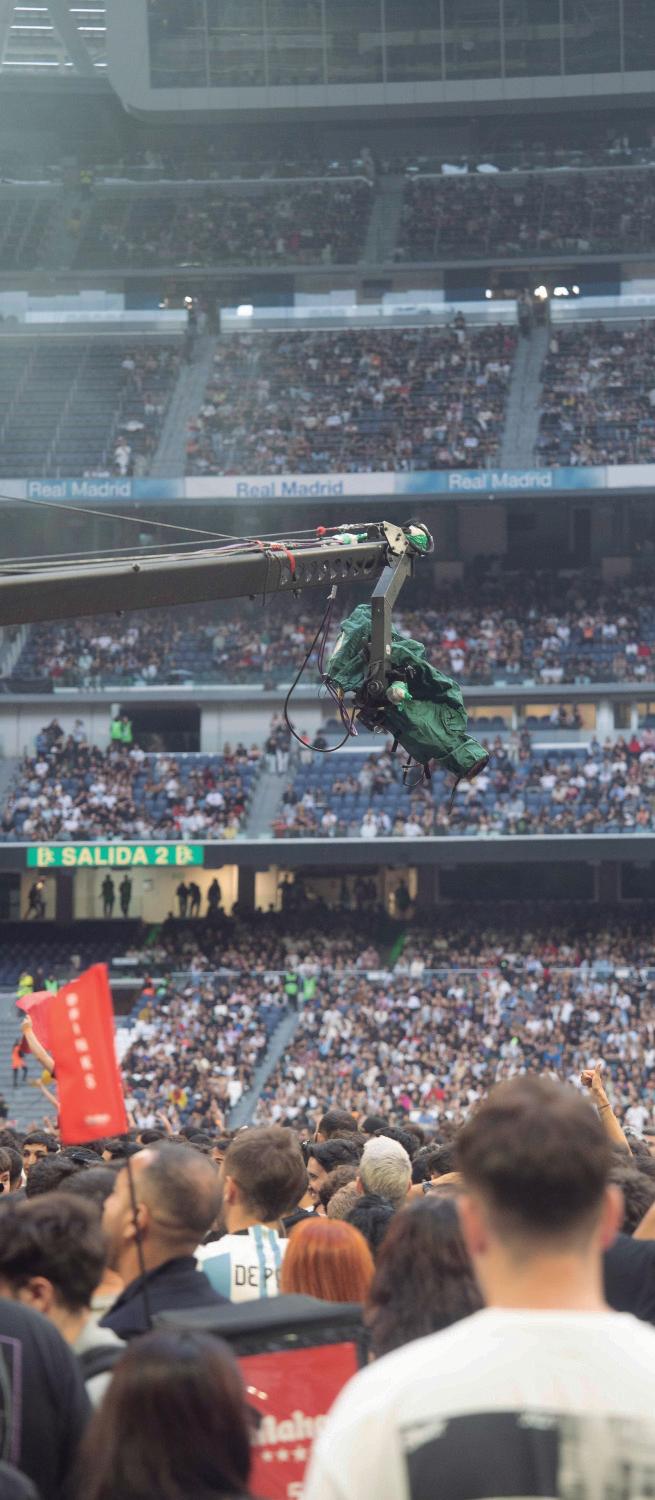
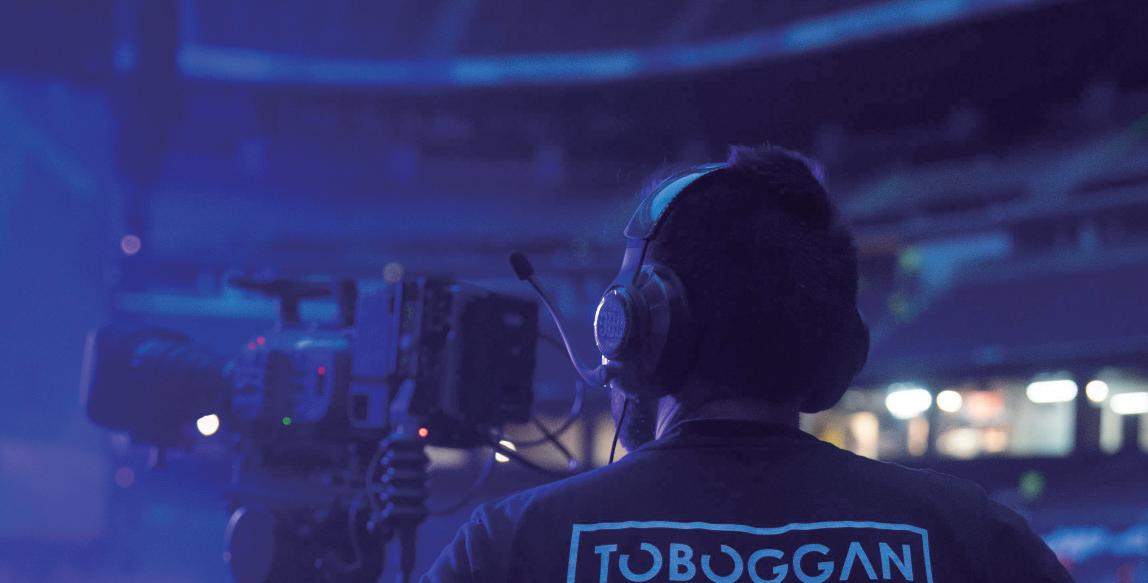
Regarding audio and video synchronization, the use of PTP as a synchronization standard in all network environments has become the norm. If, as it is our case, the environment is a hybrid one, we also use analogue reference signals, but always synchronous with PTP.
Although monetization is a little beyond my role as Technical Director, the truth be said, it is an essential aspect of the industry that we cannot ignore. Monetization strategies for live events have changed dramatically from pay-per-view streams to more innovative forms such
as subscription, targeted advertising, sponsorships, live donations, virtual ticketing, and digital merchandising.
Traditional players have quickly adapted to the technology of new digital platforms. Most of the players in the industry already have their specific VOD or streaming departments. Some of them, if not most, offer premium paid content combined with the aforementioned methods, something they could not do before within the traditional model.
Innovative solutions such as those based on artificial intelligence and
machine learning have rede fi ned work fl ows in the industry's production and transmission. These technologies are changing the way audiovisual content is produced and transmitted: they automate tedious tasks, improve video and audio quality, and customize viewer experience. We have witnessed the birth of new advances driven by arti fi cial intelligence that allow from editing, transcribing and subtitling of live video to creation of virtual scenarios and advanced audiovisual post-production. Not only do these tools make our processes more e ff ective, but they also allow creators to focus more on being creative and innovating.
Some more specific examples of automation currently available on the market include automated cameras with subject tracking and framing, in addition to autonomous focus, automated video editing tools that generate complete pieces or create live subtitles autonomously, automatic technologies for color correction and adjustment...
On the other hand, the inclusion of interaction capabilities with the viewing public has also proven to
be a vital component in improving live broadcasts, providing dynamism, participation and engagement, in addition to including the possibility of receiving feedback from the audience. This area would include real-time chats, surveys, audience reaction systems... The donation and live purchase alternatives facilitate the monetization of content; and games, multi-camera viewing, and augmented reality transform the viewer experience.
In the end, the integration of social networks into live broadcasts is crucial to increase audience participation and, therefore, ends up increasing the audience of the events. Strategies such as simultaneous streaming on multiple platforms, real-time comments and reactions, promotion through hashtags, polls and interactive voting, and collaboration with influencers can all maximize reach.

In an increasingly digital age, protecting content from piracy is a priority. The most common security measure to protect content transmissions is encryption. This is the first line of defense, although there are monitoring systems and advanced methods for user authentication to prevent unauthorized access. It is also possible to use digital watermarks on the content, which also allow devices to track possible pirated material.
We at Toboggan, we partner with industry associations Ametic and Alia to stay on top of security and anti-piracy best practices.
But not all has been said yet. As we observe how the configuration of the audiovisual production scenario changes, we can spot several emerging trends that promise to change our industry. As we mentioned earlier, the steady growth of
transmission networks and bandwidth will be essential to develop technologies that advance the AV production industry. In addition, increased bandwidth will provide producers with greater creative freedom in terms of aesthetics. They will be able to experiment with different looks and styles, being confident that both image and sound will reach the viewers exactly as designed, without losing fidelity in the transmission due to size or transmission routes.
One of the innovations that I anticipate on the technological horizon and that I am looking forward lies in the development of fully automatic and remotecontrolled cameras. What would it be like if viewers could “subscribe” to a camera, and perhaps even a drone, and, through these devices, were able to roam and move around a specific event autonomously? This would undoubtedly require advanced safety systems to ensure no one gets hurt, but the potential for creating fully immersive and customizable experiences is clearly incredible.

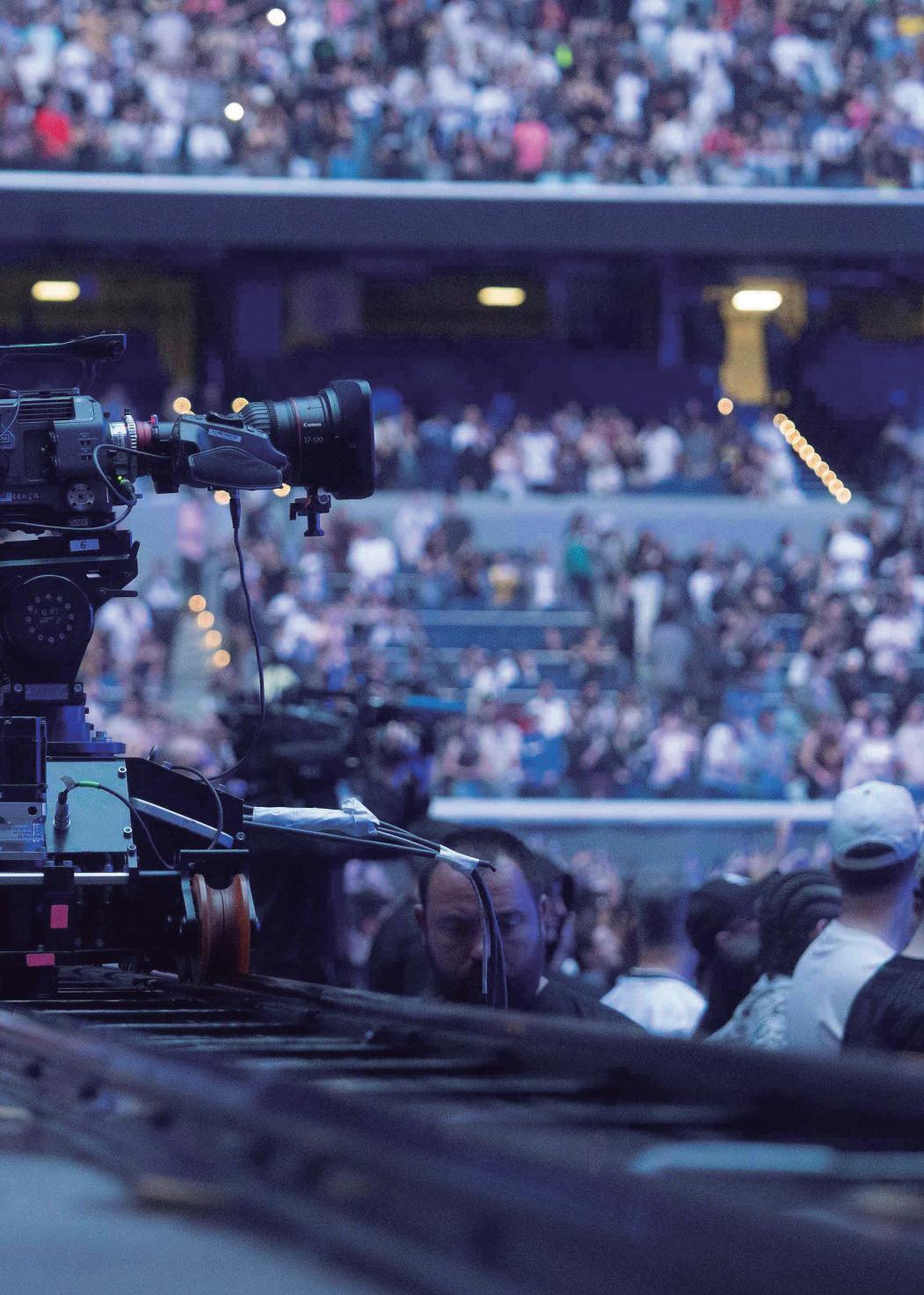
We are in the midst of an era of great changes and technological innovations in the audiovisual sector. For our part, at Toboggan Broadcast Services, as we continue to navigate this exciting new landscape we maintain a focus on adaptability and innovation. We update our equipment frequently and ensure that our operators receive ongoing training. Our close relationships with manufacturers, distributors and integrators keep us permanently updated in regard to growing and ever-changing possibilities in workflows .
The future in audiovisual production of live events from large venues is undoubtedly exciting and full of possibilities; at Toboggan, even though we have recently started our journey, we are committed to continue pushing for ever higher standards to collaborate in the expansion of the limits of our sector.
Our goal will always be the release of audiovisual experiences that transcend, move and excite viewers around the world. Therefore, as technology continues to evolve, we will evolve along with it, and we are committed to making the most of all the tools available to reach ever higher levels in the audiovisual production of live events.
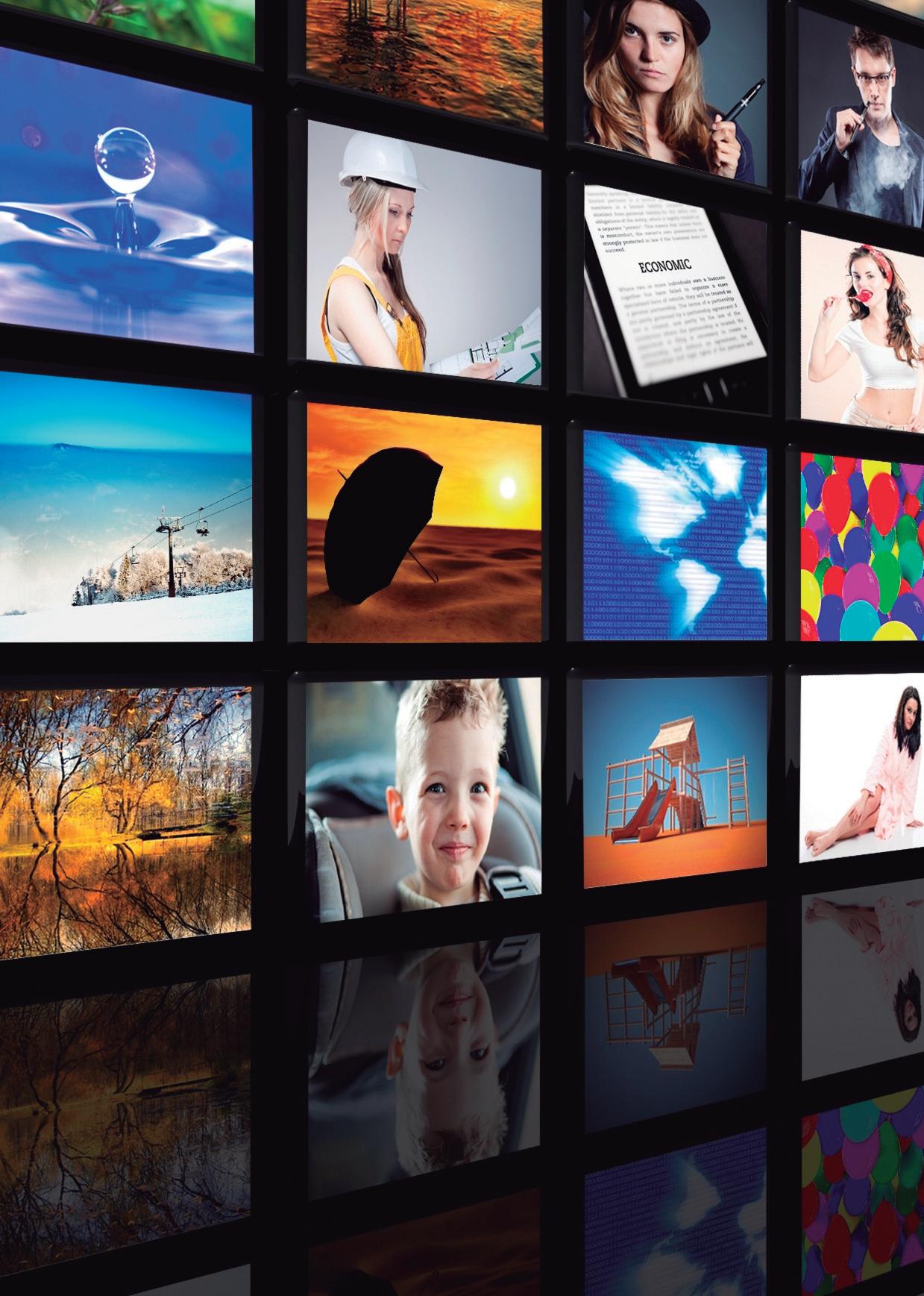
By Yeray Alfageme, Business Development Manager at Optiva Media an EPAM company
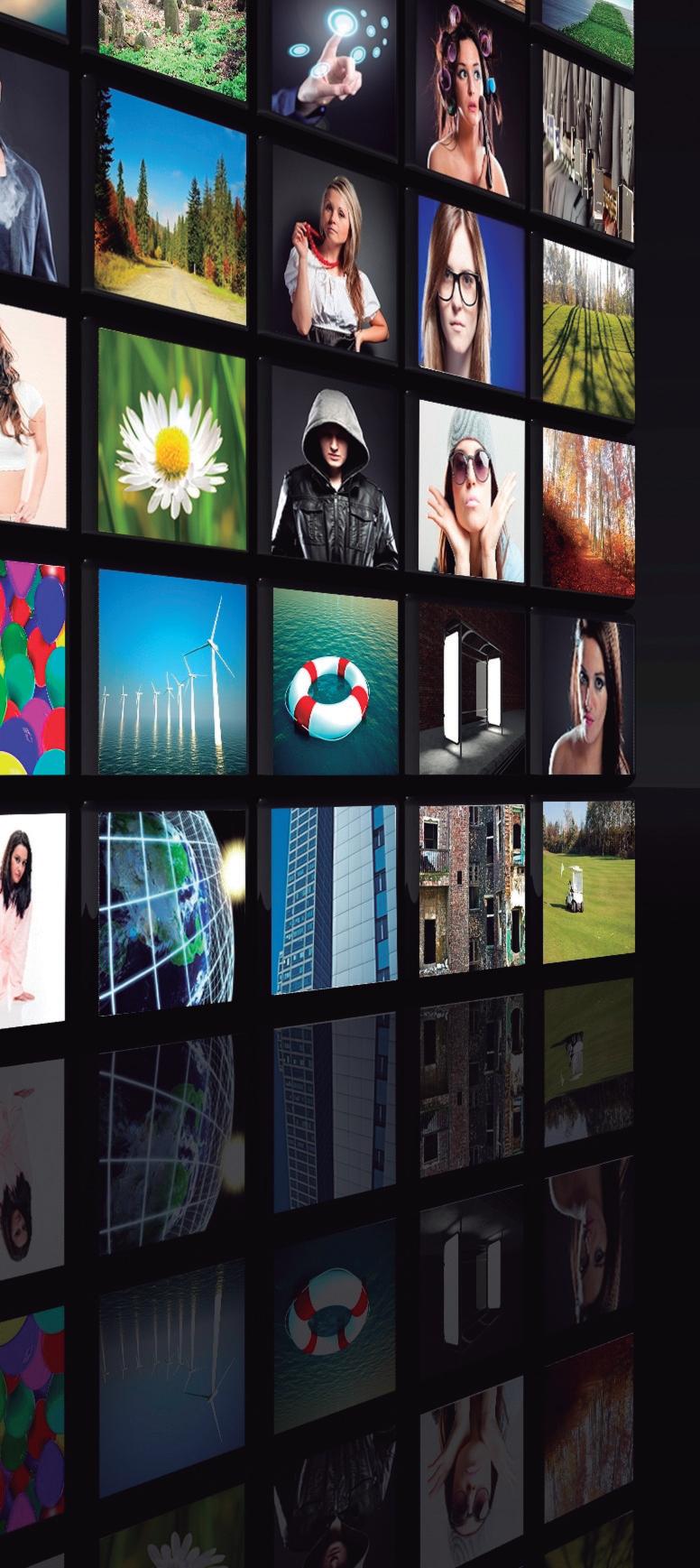
The evolution of technology is a constant in our daily lives. Under our very noses, what is old disappears and new ways of doing things emerge in a state of fl ux. For our broadcast industry, the challenge is two-fold: not only must it adapt but it must also stay at the forefront of change. In a world where the amount of digital content is doubling every two years and where the internet is getting faster and more ubiquitous, television must be reinvented to remain relevant. How is television adapting to such ultrafast-paced technological changes? By exploring how the way we produce, distribute and consume content on TV changes, we can anticipate where our industry is headed to.
future is already
The digitization of our societies has led to a large-scale data explosion. Live events are an excellent example of how we are adapting to this new reality. Thanks to Edge Computing technology, which processes data where it is generated rather than sending it to a central location, latency, or delay in data transmission has been dramatically reduced. According to data analysis company Statista, by 2025 the adoption of this technology is expected to generate a turnover of up to $15.7 billion.
Over The Top (OTT) television services, which broadcast content over the internet rather than over traditional terrestrial, satellite, or cable airwaves, are radically transforming television. Netflix, Amazon Prime and Disney Plus are examples of OTT giants that have shaken the audiovisual landscape. According to Grand View Research, in 2020 global revenues from
OTT services reached $104 billion, which demonstrates the growing popularity of this form of television consumption.
Television content formats are constantly evolving. For example, free ad-supported TV channels (FAST) are an emerging disruptor. Platforms like Tubi, Pluto TV, and Rakuten TV are examples of how content can be redistributed through viewer-customized channels, free of charge, but with ads.
UHD video, as in HDR10+ and Dolby Vision, on the other hand, is transforming the way we watch video by providing superior image quality. These technological advances not only allow for a billion additional colors and hues, but also enhance video color and contrast. Samsung, an industry leader in image displays announced back in 2021 that all of its TVs will support HDR10+
Adaptive, a new feature that optimizes image quality regardless of light conditions in a room. But let's not just get carried away by innovation. Perhaps an intermediate format, such as an HD resolution with an HDR dynamic range, either HLG, HDR10 or Dolby Vision, together with WCG color depth and immersive, interactive audio is the key to many formats. Needless to say, for more cinematic formats where the amount of information is not a problem, a high resolution makes a lot of difference, but maybe for the day to day and live events, this reflection is a matter for further thought.
Not to mention the image formats promoted by other less traditional media such as social networks, which push us to produce content in vertical, even square formats. No matter how long it took us to forget all about 4:3 and learn that 16:9 was better for viewing, now we question everything again.

Content production is also undergoing its own revolution. Traditional video mixers, which used to combine multiple video signals into a single output signal, are being replaced by multifunctional platforms that are capable of carrying multiple tasks at the same time.
In addition to these changes, mixed reality (the combination of real and
virtual elements) is gaining traction in the world of content production. For example, the BBC used mixed reality to create a virtual studio for its coverage of the 2019 UK General Election. Mixed reality allowed the BBC to recreate the Palace of Westminster in detail, thus offering viewers an immersive and almost futuristic experience.
Even being more practical, remote production possibilities that we are only beginning to use today
are going to evolve far beyond the fact that the OB van may move to the production center; the production center will be ubiquitous in any location. We have already commented on Edge Computing, but given the hyperconnectivity that we enjoy nowadays, not only thanks to 5G networks but to connections such as Starlink or similar, the possibility of capturing images from anywhere, literally, will be a reality.

And, of course we could not do without mentioning the elephant in the room: GenAI. Artificial intelligence is also starting to make its mark on the TV industry, especially concerning content generation. Artificial intelligence tools, such as the ones offered by technology company Wibbitz, is now capable of generating scripts based on existing information, automatically editing videos, and even producing 3D animations and characters, offering therefore a new way to generate content at scale and at a fraction of the cost.
And that’s only the beginning. Just as at the inception of the Internet the impact that it later had was not even fathomed at that time -not only in a certain industry such as technology but in our entire life in general- I think we do not even have an idea today of what GenAI means. There will be new formats, new jobs, new tools and even new media through which we will enjoy what we now call television that not even a generation beyond will we be able to identify.
Television is a highly specialized industry and the rapid rate of technological advances means that professionals must constantly keep up to date with such developments. Broadcast engineers, graphic designers, video editors and writers must be willing to adapt to new technologies and production methods and must adopt a philosophy of lifelong learning. This new work environment requires a flexible approach, where professionals must be ready to learn new techniques and adapt to them as they emerge.
I have always argued that broadcast professionals must be much more alert in this 21st century than our colleagues of the 20th century ever were, and all the above reflections push us to do so. I would rather not seem shallow and mean that everything is perfect or even good but I do sincerely believe that the opportunities are many for those who know how to, or simply can, adapt.

The transformation of television is in progress and, although there are still many unknowns as to how the future of our industry will unfold, one thing is clear: television, as we know it now, will cease to exist. We are at the outset of a new era of television that will be powered by innovative technologies and driven by viewers who have full control over what they watch and when they watch it.
In this new future, the ability to adapt and learn constantly will be essential. The skills that will be needed in this new world include not only mastering new technologies and production techniques, but also being able to understand the changing expectations of the audience. In this exciting future that awaits us, the only limit to the potential of television will be the imagination of those who create and consume it.
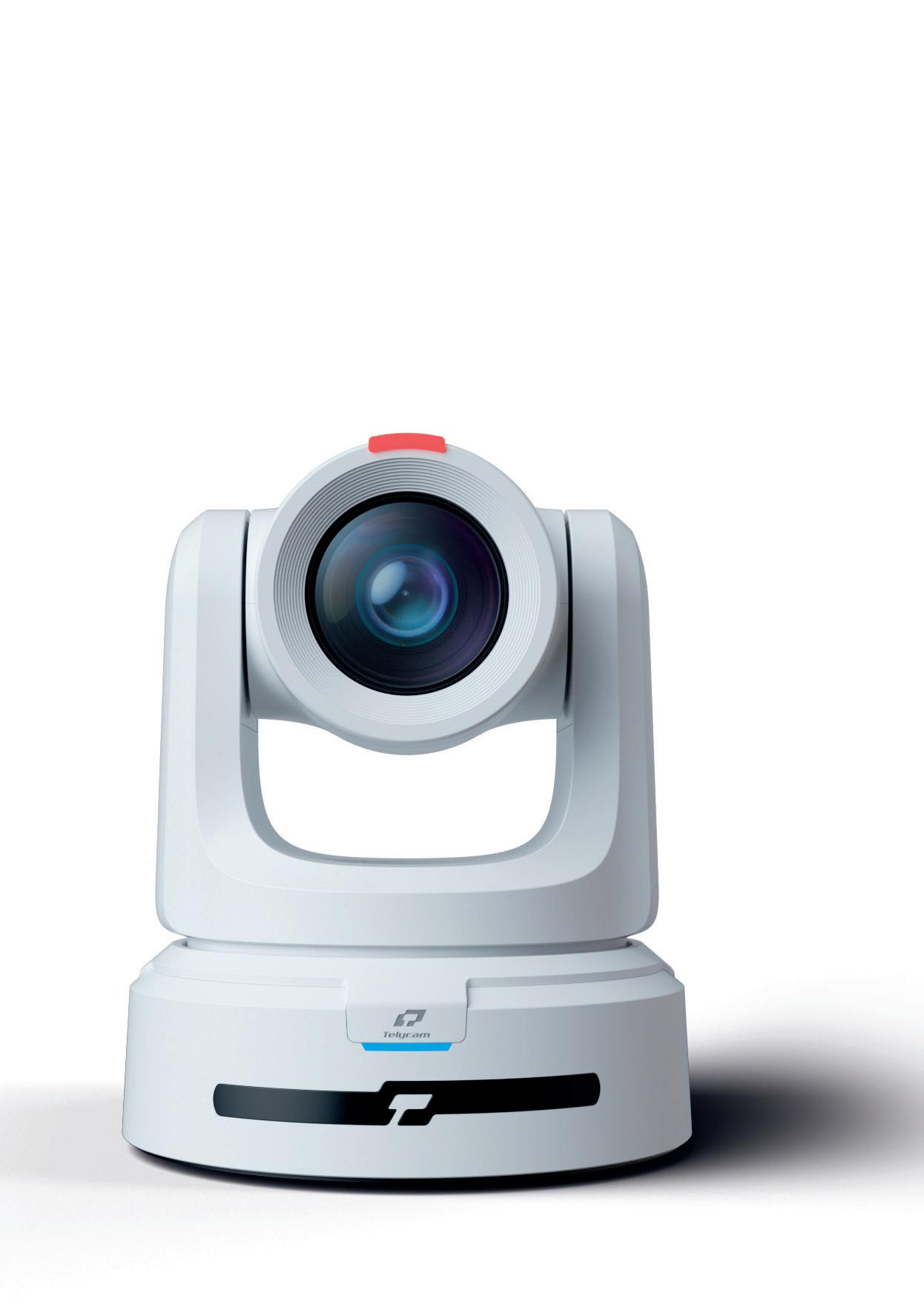

2024 and PTZ cameras means normality, success and expansion in the PRO and Broadcast environments. First of all, normality, because all audiovisual professionals have already assumed without major problems the use of this type of cameras, the so-called PTZ (acronym for Pan, Tilt, Zoom) for production and creation of content for TV and events.
Secondly, success is determined by the number of sales of PTZ camera units and by a couple of details of great importance for further promotion thereof: manufacturers present constant news at the industry’s trade shows; and the creation of their own section on their websites.
Third, the expansion is completely evident, being its use widespread in many different environments where the audiovisual is present: from assembly halls, conference rooms, collaborative work
By Carlos Medina, Expert and Advisor in Audiovisual Technology
rooms, auditoriums and multipurpose spaces, in the education environment, in Public Administrations, in the field of video surveillance and retail environments, in social/ religious ceremonies and even for offering streaming content on social media, among others.
There are other types of cameras such as POV, Bullet, Domo, Turret, multipurpose cameras or Box cameras, robotic cameras, built-in or independent webcams, conference bars and even pencil cameras or action cameras. Although each one has different applications and uses, many share the same novelties and enhancements, and day after day they evolve in the same direction.
Again, we must focus the content of this article in order to provide interesting and useful aspects for our readers. This means that we are going to comment on
the novelties and the most significant aspects that set the direction going forward for PTZ PRO and Broadcast cameras in AV:
Variety in range and type of PTZ cameras. The market is very open but we can group them by those that need a camera control operator; and others that are fully automatic (referred to by some manufacturers as “automatic tracking PTZ”), that is, once programmed they perform their functions without the need for a camera operator.
A PTZ is a camera that enables three different movements: PAN which is the panoramic movement of the camera body horizontally (from left to right or vice versa) on its own central axis and without physical displacement of the camera; TILT which shares the same characteristics, but is instead a movement
of the camera body vertically (from top to bottom or vice versa); and ZOOM, which is the internal movement of the lenses within the camera optics that allows us to have different focal lengths without changing lenses.
At present we already have a sub-variant of this type of cameras: they are called ePTZ, which means Electronic Pan-TiltZoom. It is, therefore, the evolution of PTZ cameras. Unlike traditional PTZ cameras, which have physical components for moving and zooming, ePTZ cameras use digital image processing techniques to simulate these motion and zoom effects.
A definite move towards excellence in the quality of the resulting image, so there is FHD PTZ along with 4K/UHD PTZ. They are also capable of working in Pro and Broadcast environments under both BT.709 and BT.2020 color spaces.
Better and greater control of lighting and its consequences on visual
composition, featuring the variable ND filter, exposure adjustments without modifying the depth of field or the application of HDR (High Dynamic Range) techniques.
PTZ with integrated lens with a wide variable focal range: an optical zoom of 12x, 20x or even 24x; and a smart zoom of up to 36x or up to 40x in FHD and 30x in 4K.
One of the main innovations is the incorporation of AI in such important aspects as framing and autofocus. AI tracking or focusing techniques work automatically, the camera making its own decisions under some parameters or indications, such as segmentation of the parts that make up the frame. Thus, we have some like: skeleton, head, face, clothing worn by the person, segmentation by color, standard mode, area, stage, by wide area or with fine adjustment. These are some
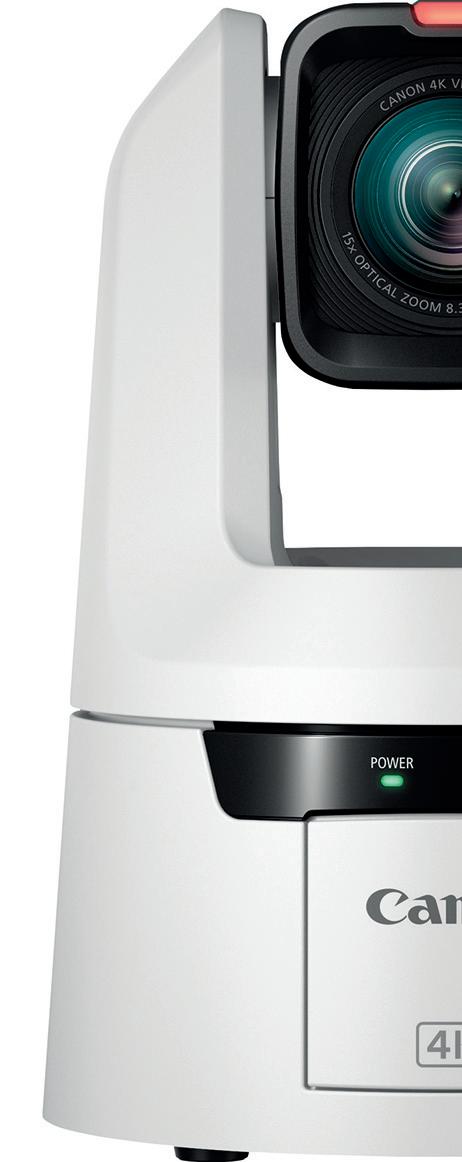
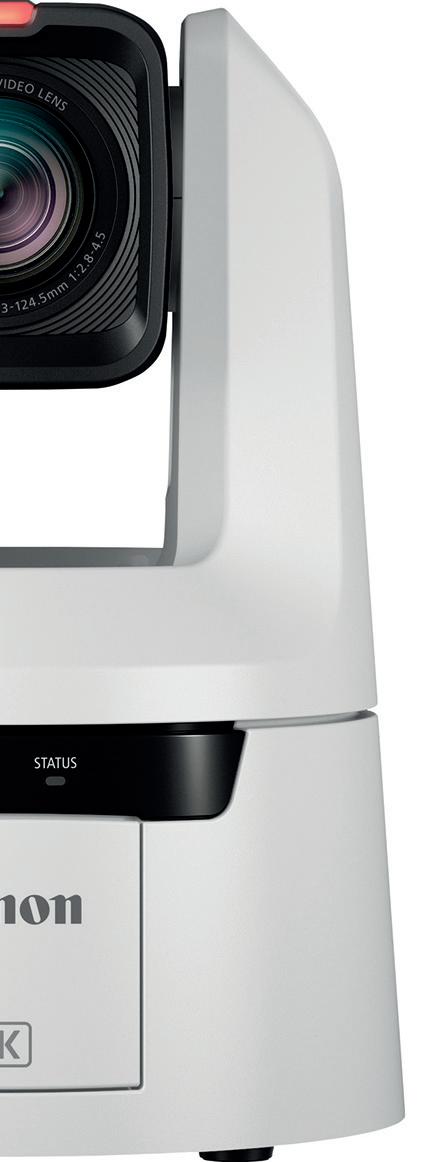
examples of the names that manufacturers use to implement an AIenabled SMART PTZ.
The appearance of PTZ cameras with faster, smoother and quieter pan-tilt rotation mechanism, thus increasing the capacity for physical coverage in degrees and decreasing the response time per second.
The ability to memorize a large number of settings (around 255) and preset PAN, tilt and zoom positions.
One of the most significant developments seen in 2024 is the appearance of a camera model featuring PTZ with interchangeable optics. That’s the Sony Cinema Line FR7, a camera with an E-mount equipped with a Full-Frame sensor. A very interesting path opens to PTZs, as these devices will benefit from being capable of supporting higher quality optics and offering better visual response in striving for a more cinematic look.
A common scenario in 2024 is multi-camera production relying only on PTZ cameras. That is, we have gone on to use these devices by replacing other types of cameras that were more conspicuous in the past. This is due to the competitive price offered by the different manufacturers and also better and easier connectivity for users.
Expansion of IP PTZ and PoE technology with minimal cabling. This means that the camera can receive and send the audio-visual, control and power signals by using a single cable and a single Ethernet connection.
Regarding size and weight, the trend is to favor greater freedom and greater flexibility for installation (ceilings, walls, cranes, on stage trusses. or on a tripod by making use of the 3/816 UNC and 1/4-20 UNC screw holes on the lower surface), which enables wider accessibility in difficult places and more vantage points.
Therefore, smaller and lighter PTZ cameras are appearing, although, as soon as the camera’s features are wider, especially in connectivity and they grown in size accordingly.
Wide compatibility that allows introducing PTZ in the PRO and Broadcast ecosystems, such as, for example, having GENLOCK terminals, video outputs (12G-SDI and HDMI®, and 3G-SDI), XLR 3 connectors and/ or a 3.5mm stereo connector.
In this sense, we must highlight a wide range of PTZ cameras with simultaneous outputs, for example through SDI, HDMI, IP and USB (depending on the model).
Compatibility with the Free-D protocol, which is commonly used in virtual productions such as augmented reality (AR) and virtual reality (VR), remains a novelty. It is one of the least implemented features.
PTZ cameras prepared
for remote production over IP networks compatible with NDI® (current version is 6), RTP/RTSP/RTMP/SRTP, TCP/IP, UDP/IP, HTTP, HTTPS, FTP, DHCPv6, DNS, NTP, ICMPv6 (MLD), RTSPoverTCP, RTSPoverHTTP, SSL(TLS), MultiCast/UniCast, VISCA™, IP Tally, S700PTP protocol, CGI and under fiber optics.
There has been substantial progress and implementation of PTZ cameras in:
- Media Management and Learning Platforms: Panopto and Kaltura.
- Live production systems: Lumens LC200 multichannel processor and production desks from Blackmagic Design, Roland, Ross and Datavideo.
- Production software: vMix, OBS Studio, Wirecast, Livestream Studio, mimoLive, Tricaster.
- Videoconferencing software and unified collaboration platforms such as Zoom, Skype, Teams and Webex.
At present, like most technical equipment in the audiovisual sector, PTZ cameras are made with sustainable materials, such as recycled SORPLAS™ plastic and more environmentally friendly packaging.
Furthermore, we must highlight the appearance of generic control panels or controllers for the operation and handling of several PTZ cameras. That is, manufacturers that develop this type of equipment are looking for compatibility with the camera regardless of model or brand.
Last but not least, the offering of PTZ cameras in kit format, that is, very economical prices for sets of three or more PTZ cameras together with their controller or control panel.
Under this landscape of novelties and wellestablished features we can list some of the most attractive PTZ camera models:
SONY BRC-AM7, a 4K 60p PTZ with AI-based Auto Framing.
SONY Cinema Line FR7 with maximum 4K 60p 4:2:2 10-bit video quality with compatible external recorders.
Triple-lens LUMENSDIGITAL ®Optics Inc PTZ VC-TR70 (with two additional face tracking HD cameras that are installed on its base to allow the AI processor to scan and analyze the scene, identify individuals, and follow a chosen subject).
JVC PTZ KY-PZ540 and JVC KY-PZ540N with several interesting features: 4K 60p50p SRT; RTMPS; HEVC; H.265; 40x HD Zoom; USB UVC Cam…
PANASONIC AW-UE30 4K PTZ. It is an ideal choice for use in existing HD or 4K workflows thanks to its simultaneous video output function (HDMI and IP).
Panasonic AW-UE100. PTZ 12G-SDI with NDI and SRT.
LAIA PTZ Broadcaster 30x, audio input through IP sending and AAC, MP3 audio protocols Multiple H265 and H264 video encoding and AAC, MP3, G711A audio compression.
AVER PTZ310 PTZ, professional camera with up to 255 different locations by using VISCA functionality via RS232 and RS422. Streamlines controls to capture content automatically and seamlessly with AVer SmartShoot.
NEWTEK PTZ3 UHD, with NDI|HX and 30x optical zoom, offers video, audio, control, tally and power through a single Ethernet cable.
PTZOPTICS Link 4K 12x. It offers 4K at 60fps via HDMI, USB and IP, and 1080p at 60fps via Dante AV-H and SDI.
Telycam Explore SE UHD/4K 60p with SFP+ connectivity. This technology offers exceptional data transfer rates and is well suited for long cabling distances.
CANON CR-N700. An exceptional 4K60P professional PTZ camera with 12G-SDI connectivity and class-leading autofocus, with built-in intelligent autotracking.
MINRRAY Ultra HD 4K-UV401A-NDI, supports H.264/H.265 encoding and connects directly to an NDI® network; certified with UL, CB, CE, FCC, EMC, RoHS, explosion-proof, as well as IP66 and IP67 certifications.
DATAVIDEO PTC-305T. This HDBaseT version allows a single CAT-6 cable to transfer video, control, power and indicator light. Plus an RS-422 serial port or by IP remote control via DVIP or Sony VISCA over IP.
The list of models will keep growing, with the presence of more and better manufacturers and with the approval from professionals in the Pro and Broadcast sectors who are already making it clear that PTZ camera production is much more than a fad.

Interview with John Wastcoat, SVP BD and Marketing @Zixi


How has Zixi’s acquisition by Clearhaven Partners in June 2024 impacted the company’s strategic direction and product development plans?
Zixi’s acquisition by Clearhaven is still in its early phases, but they have a great deal of expertise scaling software companies and with a unique video thesis, are a natural fit for Zixi and one that will enable us to double down on product innovation as well as present the option for potential strategic acquisition if there are complementary companies available.
Which are the groundbreaking developments in efficiency that Zixi showcased at NAB 2024? How do these innovations help broadcasters improve their profitability?
Zixi launched its v17 at NAB 2024 that brought a wide range of new features and extraordinary efficiency improvements to its platform. Zixi’s High-Performance Networking, leveraging DPDK enables broadcasters to achieve remarkable throughput efficiency while utilizing only a fraction of processing power. This allows a Zixi Broadcaster to deliver 3x the amount of Zixi traffic versus previous versions and as a result the associated costs of compute is reduced by two-thirds. They can then reallocate those dollars in acquiring and monetizing new content.
Zixi reported 100% year-over-year growth in annual recurring revenue from OTT customers in 2023.
What factors contributed to this significant growth, and how do you see this trend continuing in 2024?
Zixi is experiencing a continuous increase in demand from its OTT customers, as it continues to add new clients and expand with existing ones. Many OTT customers aggregate content from a wide range of sources and need a single platform that can handle universal ingest, transport stream normalization to a desired format, and a unified control plane that makes managing these systems a straightforward. Zixi SDVP, with its support for over 18 different protocols, live transcoding, and ZEN Master, addresses all these applications and enables its OTT customers such as Fubo, Amazon Video, Apple and others to easily ingest and distribute the massive amounts of live and live linear content that they are providing to their viewers.
The Zixi protocol is known for its ability to handle up to 45% packet
loss and deliver ultra-low latency. How has this technology evolved in the past year to meet the increasing demands of live video streaming?
The proliferation of live video streaming and cloud-based platforms has created numerous challenges for content creators and broadcasters to transport content reliably over the lossy public networks. Zixi protocol can handle up to 45% packet loss while maintaining ultra-low latency and has been awarded a patent for its hitless failover technique emerging as a key differentiator. The Zixi protocol now supports
dynamic latency which allows the networks to dictate the latency which can drastically improve user experience and Zixi has also added High Performance Networking which leverages DPDK to achieve remarkable throughput efficiency improvements while utilizing only a fraction of processing power. Additional advancements include timeline normalization, seamless live midroll insertion, and dynamic HTML overlays, all empowering our customers to achieve more with less while enhancing the overall user experience.
Can you discuss the enhancements made to the ZEN Master
Control Plane in 2024, particularly in terms of workflow visualization and root cause analysis?
ZEN Master has emerged as the leading cloud-based control plane, largely due to its live video orchestration, automation, configuration and deep telemetry monitoring. It allows Zixi users to efficiently manage large-scale configuration and monitoring of the Zixi Enabled Network, Zixi’s live streaming platform, devices, and appliances. Workflow visualization dashboards provide users with a comprehensive view of the entire signal chain, enabling operators to easily detect any faults or warnings.


With the ability to utilize MOCA (Multi Object Correlation Analysis), ZEN Master can automatically analyze incidents across all channel sources and target destinations. By correlating incidents that share common attributes, operators can quickly pinpoint probable root causes and understand their impacts across seemingly unrelated channels. This significantly accelerates root cause analysis, helping customers reduce churn, cost and enhance the quality of service.
Zixi’s platform monitors 9 billion mission-critical telemetry data points daily. How are you leveraging AI and ML to derive actionable insights from this vast amount of data?
With Zixi’s SDVP powering the highest-value live streams globally for over 1,400 media customers and 400+ technology partners, the Intelligent Data Platform (IDP) has unique access to network and video quality telemetry totaling over
9 billion data points daily. It leverages multiple AIdriven and ML-powered algorithms to process and correlate this data, producing proactive insights in various ways and identifying patterns that humans cannot. This capability allows for early warnings and fuels IDP Insights, which continuously analyzes these data points to detect performance anomalies and generate a Zixi Health score that accurately predicts future channel performance. This enables users to confidently scale and launch new services without significantly increasing operational monitoring overhead.
The company delivered over 1.5 million live sports events globally in 2023. What unique challenges does sports broadcasting present, and how does Zixi address them?
Zixi has experienced continuous growth in live broadcast streaming, one of the most demanding segments of streaming due to the critical latency
and quality requirements for successful applications. Each sports broadcasting event presents unique challenges, such as unreliable or limited network bandwidth and the need to deliver streams in various formats to different targets. Zixi’s protocol, featuring its patented hitless failover technique and advanced bonding capabilities, powers even the most demanding broadcast applications with minimal network availability. Zixi’s SoftwareDefined Video Platform (SDVP), which supports over 18 different protocols, can receive streams in any format and deliver them to each target in its desired format. This versatility enables Zixi to handle any broadcast streaming application efficiently.
How has the partnership with Verizon Business, announced in February 2024, advanced next-generation 5G M&E workflows?
Verizon’s substantial investments in B2B 5G networks make them an
ideal partner for powering next-generation 5G Media & Entertainment (M&E) workflows. This partnership enables Zixi to deploy its software close to the edge, delivering broadcast quality streams at ultra-low latency while maintaining reliability. Users can leverage the high bandwidth of 5G networks to deliver high-quality, high-bandwidth streams for the most demanding sports applications. This reduces the overhead costs of on-site production and provides customers with the agility to offer a more engaging fan experience, something previously unattainable with traditional M&E workflows. A good example is the remote production of live NHL games that we did together and is described here by the stakeholders https://zixi.com/webinar/ nab-2024-nab-live/
Can you provide more details about the Live Events Manager tool introduced in 2024? How does it enhance live production capabilities at scale?
With Zixi’s dramatic growth in live sports, our customers asked for more from the ZEN Master control plane, which serves as a unified cloud orchestration tool for the entire signal flow chain. We added the Live Events Manager which offers sophisticated event management tools designed to enable live production at scale. It provides advanced event schedule management, allowing operations teams to define event schedules programmatically or manually. Event stages enable automated stream switching and alerting rules tailored to pre/live/ post-event phases, and alerting templates and sophisticated live event monitoring ensure smooth event operations, while operational dashboards offer ‘at a glance’ confidence monitoring across all scheduled events.
The integration of Zixi SDVP into Evertz’s XPS Series has been a significant development. Can you elaborate on how this partnership
has enhanced the capabilities of both companies in delivering high-quality, low-latency video over IP networks?
Evertz’s XPS Series real-time live streaming platform has integrated the SDVP for broadcast-quality video encoding at ultra-low latency, ideal for missioncritical applications like Esports, live interviews, and high-profile entertainment events. Together, Zixi and Evertz deliver realtime, ultra-low latency video with the highest quality for 24/7 uptime applications. Users can stream over any IP network, including unmanaged Internet connections, and achieve 4K quality remote contribution, remote monitoring and operations, and command and control video workflows, providing the ultimate solution for IPTV distribution.
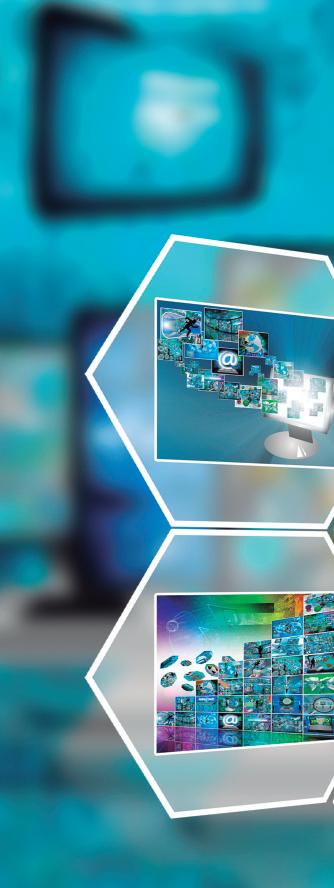
Evertz’s offerings, particularly for mission-critical applications like live sports broadcasting and remote production?
With the Zixi protocol’s ability to provide error-free video transport over IP with 99.9999% uptime at minimal latency, how has this impacted
Since the pandemic, remote production over public networks has seen continued growth, necessitating a reliable way to transport missioncritical content from

venues over unmanaged public networks. Evertz offers robust on-premise hardware solutions, and when paired with Zixi’s SDVP, it enables users to leverage cost-effective and readily available unmanaged public networks. This combination extends its reach to a wide range of live sports and remote production applications.
The Zixi Enabled Network has grown significantly. How do you maintain interoperability and ensure seamless integration with over 400 partners and OEMs?
Zixi has over 400 technology partners who have integrated Zixi into their devices and software platforms, standardizing
on Zixi for their service offerings to ensure worldwide interoperability as part of the Zixi Enabled Network. The Zixi Partner Program is comprehensive, providing the SDK and necessary software for testing to facilitate quick and easy integration. Zixi also dedicates engineering resources to assist with evaluation, integration, and testing, ensuring all features
and functionalities required by our mutual customers are included. Additionally, they support partners in completing the Zixi certification checklist which ensures interoperability and seamless integration across all our partners.
What role does Zixi play in the transition from satellite to IP-based video transport, and
how are you helping broadcasters navigate this shift?
Zixi has a proven track record of helping customers transition from traditional satellite-based transport, which is becoming increasingly costly, to IP-based video transport that offers the flexibility and cost savings needed to stay competitive in today’s
market. Zixi’s expertise includes SMEs who have worked on numerous projects, assisting customers in navigating the challenges of shifting from satellite to IP. The SDVP includes all the necessary tools to make this transition as reliable as satellite and as seamless as possible. With ZaaS, we extend this offering further by
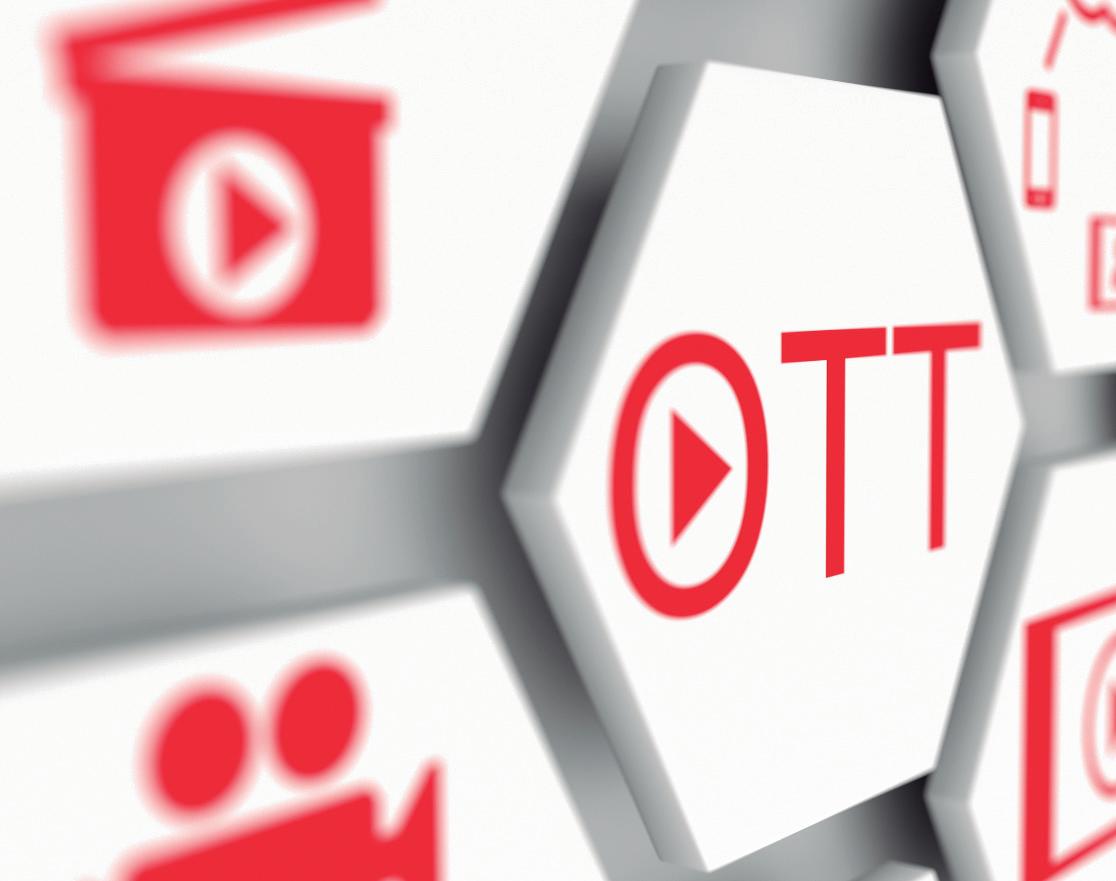
providing customers with a cost-effective cloud infrastructure, allowing them to focus on growing their business.
Looking ahead, what do you see as the most significant challenges and opportunities for Zixi in the evolving landscape of video delivery over IP?

As more customers transition to IP as their primary method of video distribution, and with Zixi being selected for over 70% of live video distribution content, Zixi is exceptionally well-positioned to tackle the challenges that our customers will encounter. Zixi is experiencing ongoing growth in the live broadcast and remote production segments, and it is increasingly chosen for a significant amount of FAST (Free Ad-Supported Television) content delivery, OTT delivery, as well as live and live linear distribution. This underscores Zixi’s strong market presence and its ability to meet the evolving needs of broadcasters and content distributors worldwide.
Are there any upcoming features or products that Zixi plans to release in the near future (that you can talk about) to further enhance its softwaredefined video platform?
Having delivered content over IP for the past 15 years, Zixi continues to innovate to meet the evolving needs of its customers. We are
planning numerous new features and enhancements across all our products, including stream switching support for ESNI and ESAM for SCTE 224. This enables broadcasters to transition from traditional delivery methods while maintaining necessary workflow support. The Zixi Live Events Manager is also slated to introduce a variety of new features, as we continually strive to enhance the efficiency of our platform. These efforts aim to make our solutions more sustainable and deliver cost savings on bandwidth and compute resources for our customers. Also, the ability to capture protocol and system metrics at every transport stage connected to Zixi Broadcasters which allows tracing the source of upstream stream issues, even when the upstream Zixi Broadcasters belong to another organization. And our customers have been asking to us to partner with DRM vendors for security and rights management so will be releasing integrations with Irdeto and some other leading vendors.
